Vol. 71, No. 16 (2022)
2022-08-20
SPECIAL TOPIC—Scalable production of two-dimensional materials
COVER ARTICLE
INVITED REVIEW
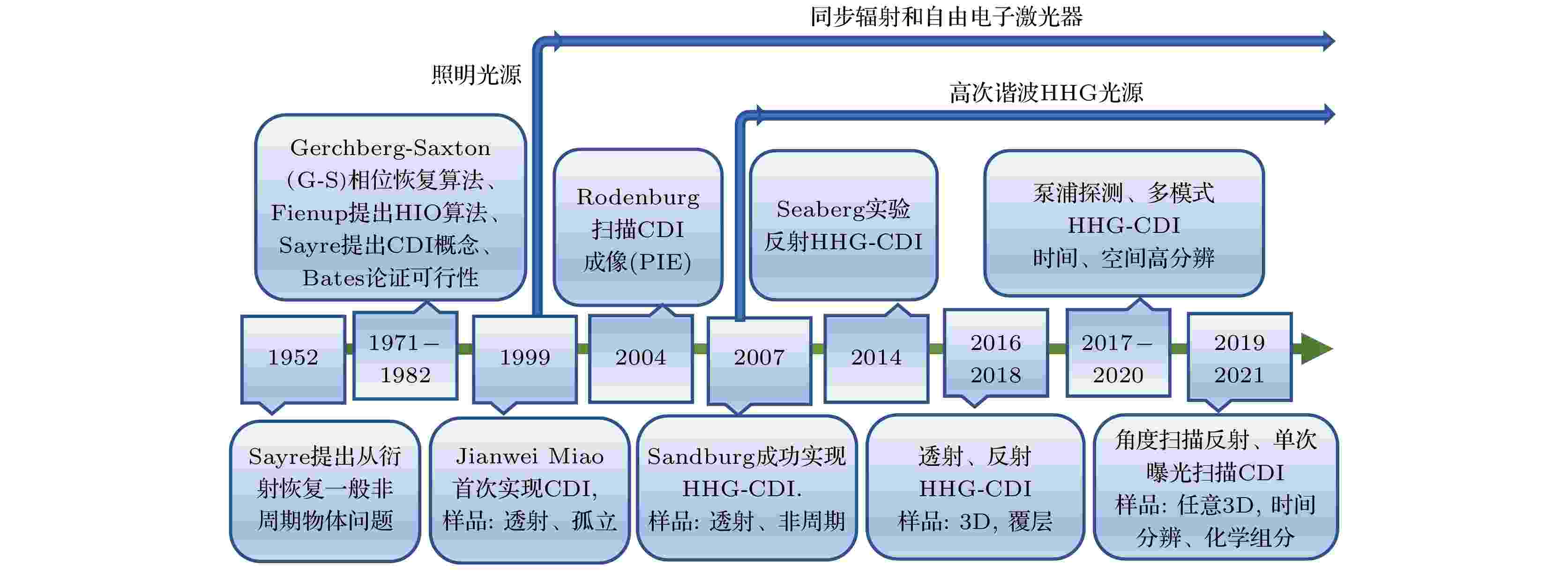
INVITED REVIEW
2022, 71 (16): 164205.
doi: 10.7498/aps.71.20220976
Abstract +
Coherent diffractive imaging (CDI) using ultra-short wavelength light source has become an three-dimensional(3D) nanoimaging technique. In CDI, a target sample is first illuminated by a coherent EUV and soft X-ray light, then the diffraction pattern is recorded by using a charge coupled device (CCD), and finally the image of the sample is obtained based on the pattern by using a phase retrieval algorithm. Of the many currently available coherent EUV and soft X-ray light sources, the high-order harmonic generation (HHG) is the simplest in structure, the lowest in cost, and most compact in size. Therefore, it has become the most promising light source for CDI. Through years of development, HHG based CDI technique(HHG-CDI) has become an outstanding 3D nano-imaging technique with the advantages of no aberration, no damage, and no contact either, and it also possesses the extra-capabilities of probing the dynamics, chemical composition and quantum information in various semiconductor and quantum devices. We believe that the HHG-CDI will soon become a generic nano-imaging tool that can complement or even replace the matured nanoimaging techniques, such as atomic force, near field, X-ray, electron, or scanning tunneling microscopes.
SPECIAL TOPIC—Recent advances in hardware, algorithms and software of quantum computers
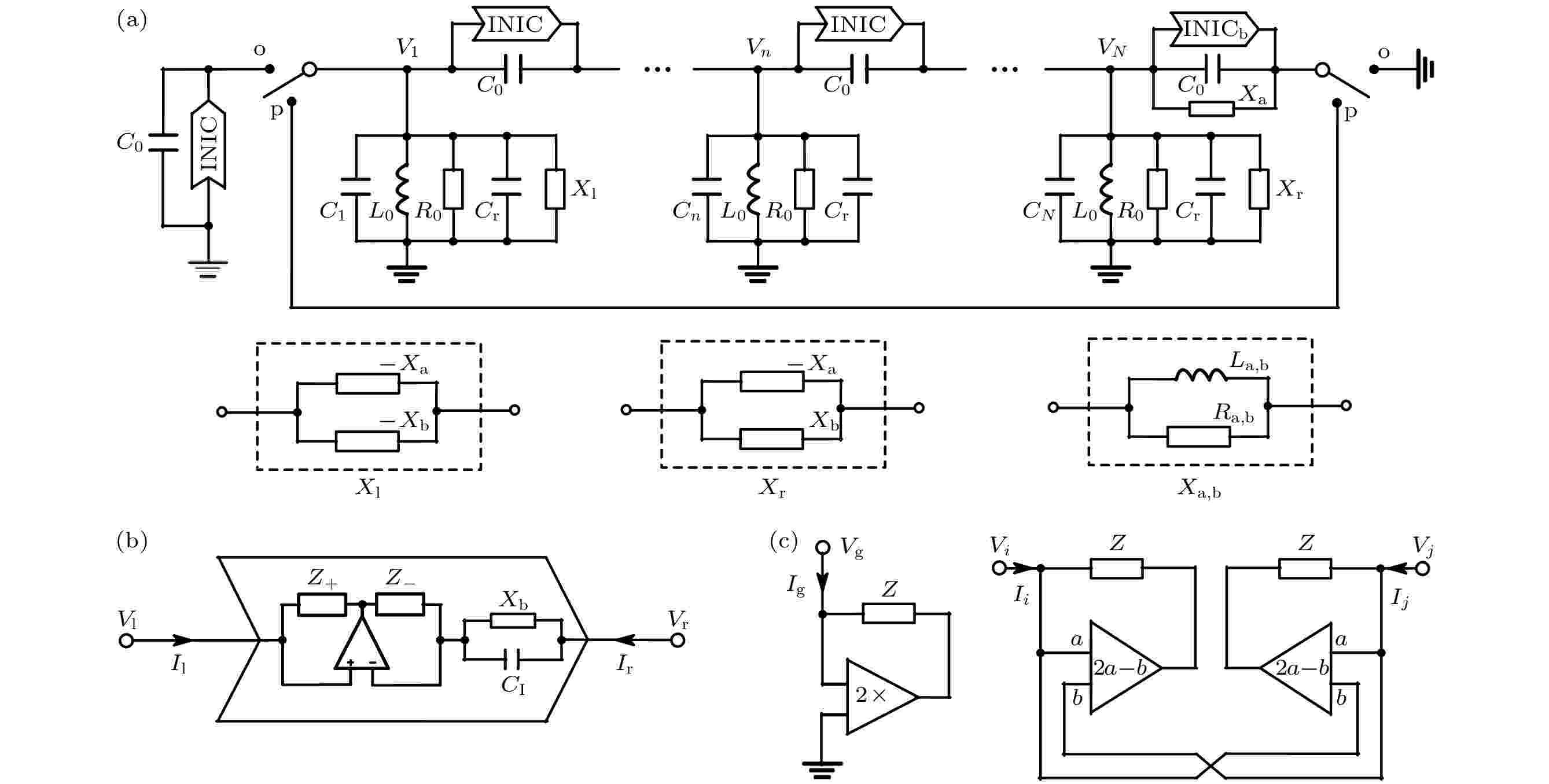
EDITOR'S SUGGESTION
2022, 71 (16): 160301.
doi: 10.7498/aps.71.20220219
Abstract +
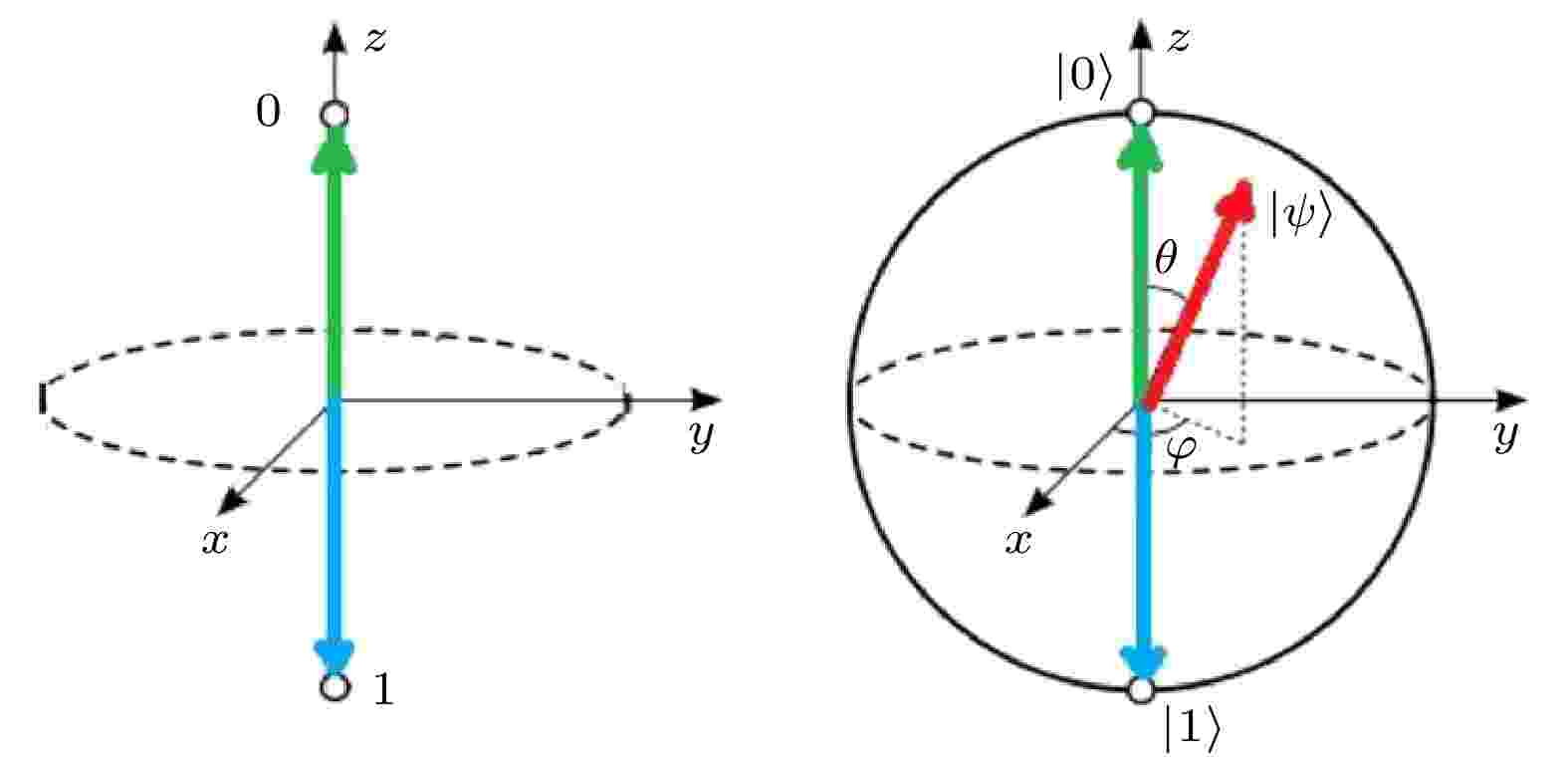
EDITOR'S SUGGESTION
2022, 71 (16): 160302.
doi: 10.7498/aps.71.20220596
Abstract +
Since the physical limit of Moore's law is being approached, many alternative computing methods have been proposed, among which quantum computing is the most concerned and widely studied. Owing to the non closeability of quantum system, the uncontrollable external factors will lead to quantum dissipation and decoherence. In order to avoid the decoherence of quantum superposition state, the fabrication of robust quantum bits has become one of the key factors. Majorana zero mode (MZM) is a quasi-particle emerging in the topological and superconducting hybrid system. It has non-Abelian statistical properties. Therefore, the topological qubit constructed by MZM has natural robustness to quantum decoherence. Despite the arduous exploration by various experimental groups, the experimental verification of MZM is still lacking. This paper reviews the history and main technical routes of quantum computing, focusing on the theory of topological superconductors, observable experimental phenomena, and the latest experimental progress. Furthermore we discuss and analyze the present status of the topological superconductor research. Finally, we prospect the future experiments and applications of topological superconductors in quantum computing.
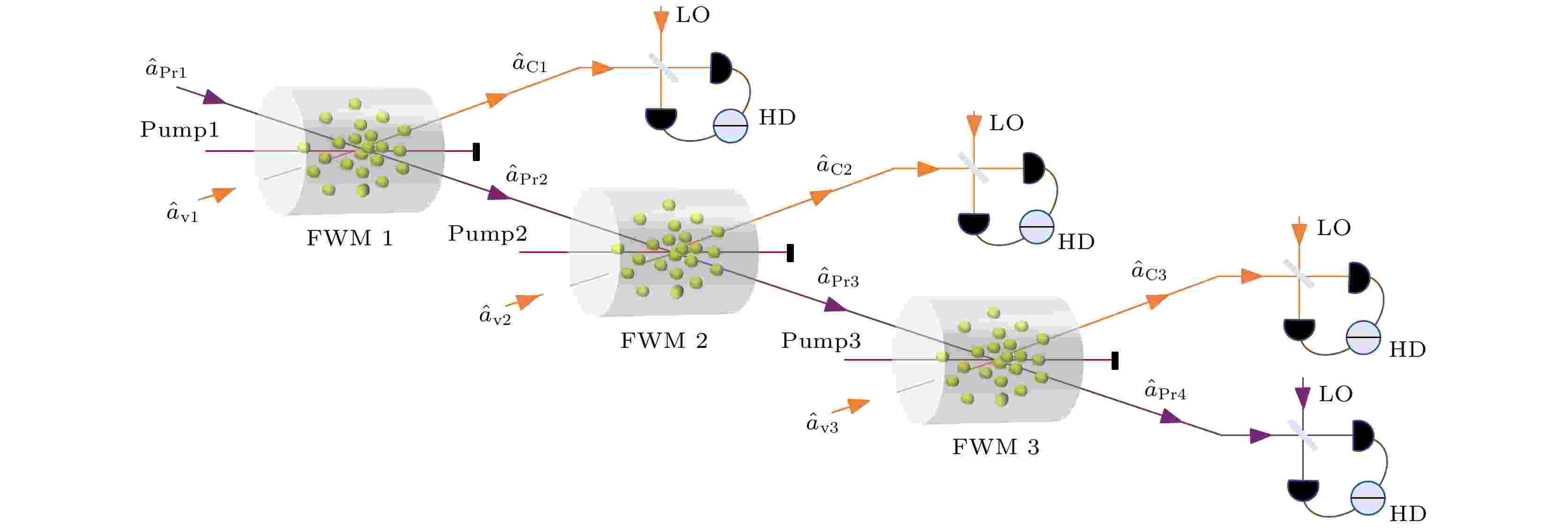
EDITOR'S SUGGESTION
2022, 71 (16): 160304.
doi: 10.7498/aps.71.20220433
Abstract +
As a crucial quantum resource for quantum computing and quantum information processing, cluster state has attracted extensive attention due to its unique entanglement properties and rich structures. In this work, we theoretically propose a scheme for generating four-mode entangled states based on cascaded four-wave mixing (FWM) process. The internal entanglement characteristics are studied by using the positivity under partial transposition criterion and eigenmode decomposition. In addition, the output entangled states are reconstructed and optimized by adjusting the relative phase of balanced homodyne detection and postprocessing the signal noise, and finally three four-mode cluster states with different structures are generated. Such a method can effectively reduce the excess noise induced by finite squeezing. Our theoretical results provide a reliable way of generating scalable continuous variable cluster states based on FWM process in atomic ensemble.

EDITOR'S SUGGESTION
2022, 71 (16): 160305.
doi: 10.7498/aps.71.20220635
Abstract +
Quantum computation presents incomparable advantages over classical computer in solving some complex problems. To realize large-scale quantum computation, it is required to establish a hardware platform that is universal, scalable and fault tolerant. Continuous-variable optical system, which has unique advantages, is a feasible way to realize large-scale quantum computation and has attracted much attention in recent years. Measurement-based continuous-variable quantum computation realizes the computation by performing the measurement and feedforward of measurement results in large-scale Gaussian cluster states, and it provides an efficient method to realize quantum computation. Quantum error correction is an important part in quantum computation and quantum communication to protect quantum information. This review briefly introduces the basic principles and research advances in one-way quantum computation based on cluster states, quantum computation based on optical Schrödinger cat states and quantum error correction with continuous variables, and discusses the problems and challenges that the continuous-variable quantum computation is facing.
SPECIAL TOPIC—Scalable production of two-dimensional materials

COVER ARTICLE
2022, 71 (16): 166101.
doi: 10.7498/aps.71.20220388
Abstract +
As the scaling-down of semiconductor processing technology goes on, it is urgent to find the successor of silicon-based materials since the severe short channel effect lowers down their energy efficiency as logic devices. Owing to its atomic thickness and van der Waals surface, two-dimensional semiconductors have received huge attention in this area, among which Bi2O2Se has achieved a good trade-off among the carrier mobility, stability and costing. However, the synthesis of Bi2O2Se need some polarized substrates, which hinders its processing and application. Here, a Bi2O2Se layer with 25 µm in size and 51.0 nm in thickness is directly synthesized on a silicon substrate via chemical vapor deposition . A Field-effect transistor with a carrier mobility of 80.0 cm2/(V·s) and phototransistor with a photoresponsivity of 2.45×104 A/W and a photogain of 6×104 is also demonstrated, which hpossesses quite outstanding photodetection performance. Nevertheless, the high dark current and low on/off ratio brought by the large thickness leads to a fair detectivity (5×1010 Jones). All in all, , although silicon substrate brings convenience in device fabricating, it is still needed to further optimizing the growth and integrating more applications of various two-dimensional materials .
SPECIAL TOPIC—Nano engineering and thermophysics

EDITOR'S SUGGESTION
2022, 71 (16): 166501.
doi: 10.7498/aps.71.20220306
Abstract +
With the rapid increase of the thermal power density of microelectronic devices and circuits, controlling its temperature has become an urgent need for the development and application of the electronic industry. By virtue of the ultrahigh thermal conductivity of graphene, developing high-performance graphene-based composite thermal interface materials has attracted much research attention and become one of hot research topics. The understanding of phonon transport mechanism in graphene-based composites at atomic scale can be helpful to enhance the heat conductive capability of composites systems. In this review, focused on graphene-based thermal interfaces materials, the heat conduction mechanism and the regulating strategy are introduced on both the internal thermal resistance and interfacial thermal resistance. Finally, the reseach progress and opportunities for future studies are also summarized.
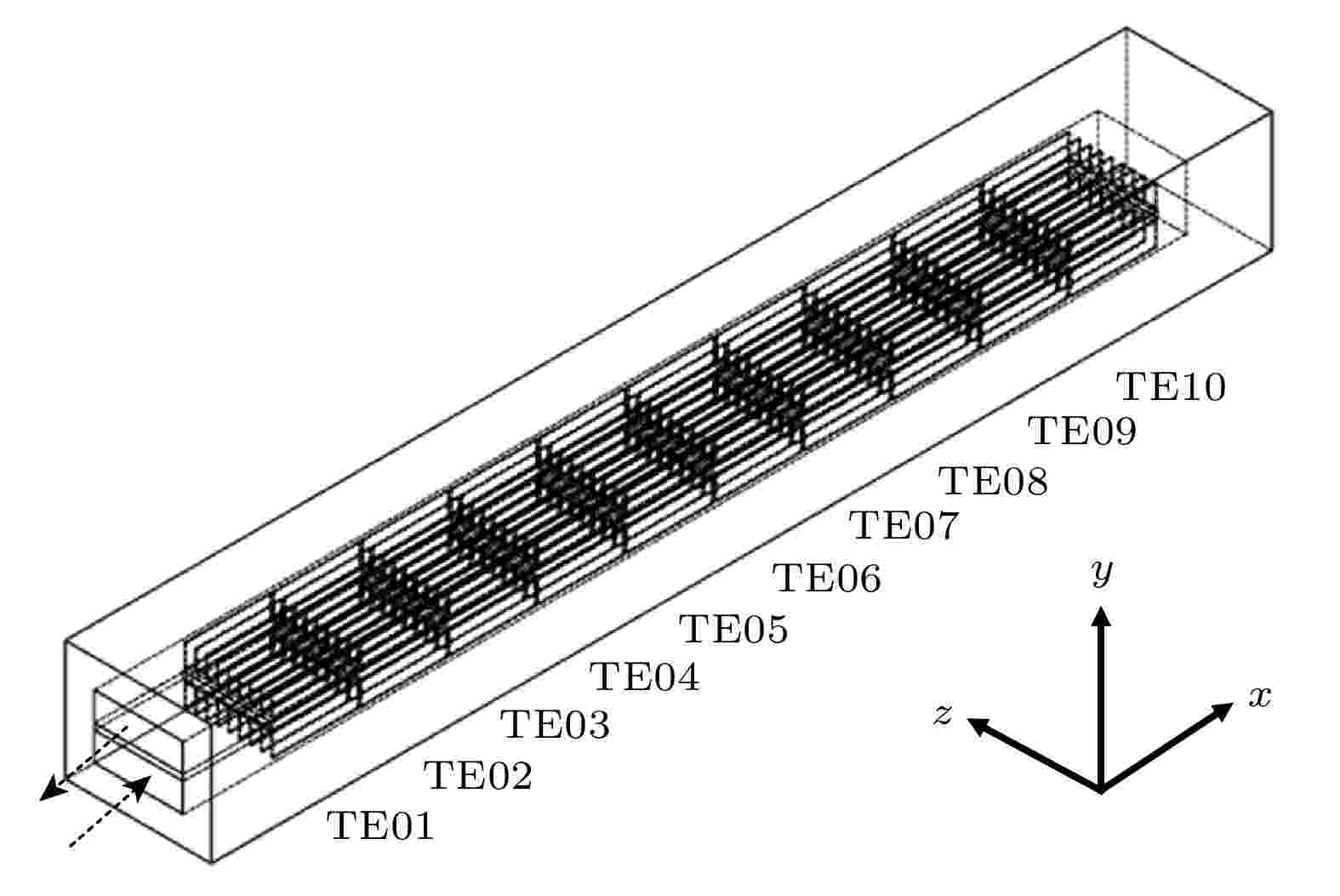
EDITOR'S SUGGESTION
2022, 71 (16): 168401.
doi: 10.7498/aps.71.20220757
Abstract +
Epidemic viruses seriously affect human health and the normal operation of society, so it is particularly important to effectively kill viruses. In this work, the thermal performance of a thermoelectric air disinfection system are studied. Utilizing the characteristics of semiconductor thermoelectric sheets with both cold and hot ends, the system can increase the air temperature by heating (cound be used in sterilization), and then, reduce the temperature of the air by cooling. The measurement results show that the air temperature can be increased to 80 ℃ first, and then cooled to 35 ℃. The total energy utilization rate of the system can reach up to 1.2. In addition, combined with the measurement results and numerical calculations, the parameters such as the number of thermoelectric element series, input power, air flow, and boundary insulation can be used to analyze their effects on the system performance. The system may have broad potential applications in public health, medical care, and household disinfection.
GENERAL
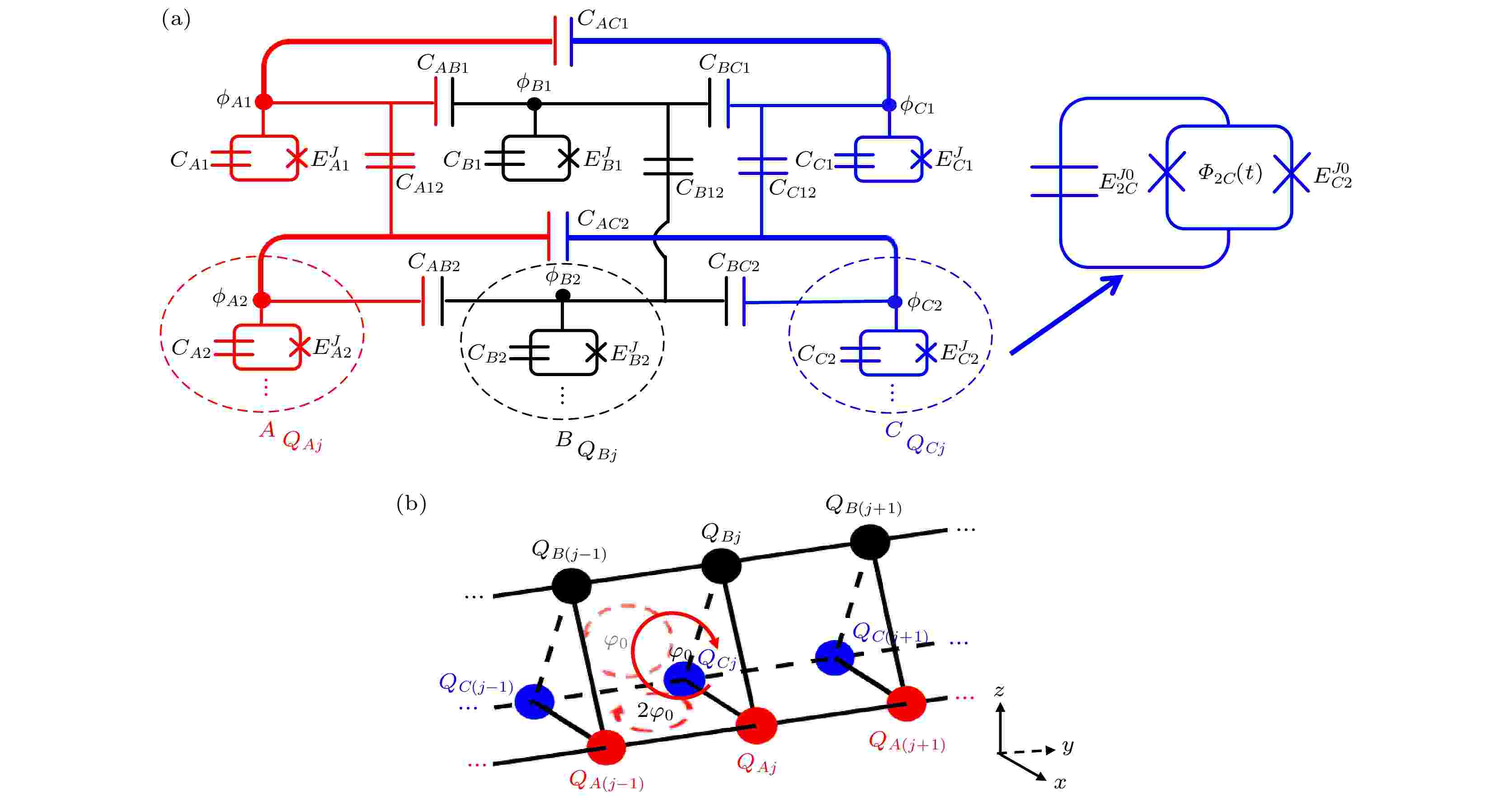
2022, 71 (16): 160303.
doi: 10.7498/aps.71.20220293
Abstract +
Hall tube is an important model to simulate the quantum Hall effect. However it hasn't been realized in superconducting circuits which have emerged as a promising platform for macro-controlling quantum effect. Taking advantage of the fine tunability of superconducting circuits, the three-chain superconducting transmon qubits with periodic boundary condition are designed in this paper. For constructing a synthetic Hall tube, ac magnetic fluxes are introduced to drive each transmon qubit. The gauge field emerged in this synthetic Hall tube can be tuned independently by properly choosing the driving phases. Then the ground-state chiral currents are discovered in this synthetic Hall tube, which are Meissner current on $xy$ plane ($xy$ -M), vortex current on $xy$ plane ($xy$ -V), vortex current on $xz$ plane ($xz$ -V), and vortex current on both $xy$ and $xz$ planes (DV). For distinguishing these chiral currents, four order parameters $J_{C//}$ , $J_{AB}$ ($J_{BC}$ ), and $J_{CA}$ are defined. Then the ground-state quantum phase diagrams are mapped out. The emergence of the different quantum phases is due to the competition between the coupling strengths $\tilde{t}$ and $t_{CA}$ . The Meissner and vortex currents emerging in this synthetic Hall tube also emerge in type II superconductor, which can generate an opposite field to weaken the influence of the applied field. Thus this synthetic Hall tube can be used as a diamagnet. At last we consider the influence of the imperfections in device fabrication. We proof when the strength of the imperfection is not large enough, the quantum phase diagrams shown in this paper remain valid. Moreover, the possible experimental observations of the ground-state chiral currents are addressed. The ground state of this synthetic Hall tube can be generated by applying microwave pulses. Then the corresponding density matrix can be constructed by the quantum state tomography. After constructing the density matrix, the order parameters can be obtained by calculating the trace. These results enrich the quantum currents in Hall tube and provide a new route to explore novel quantum phases.
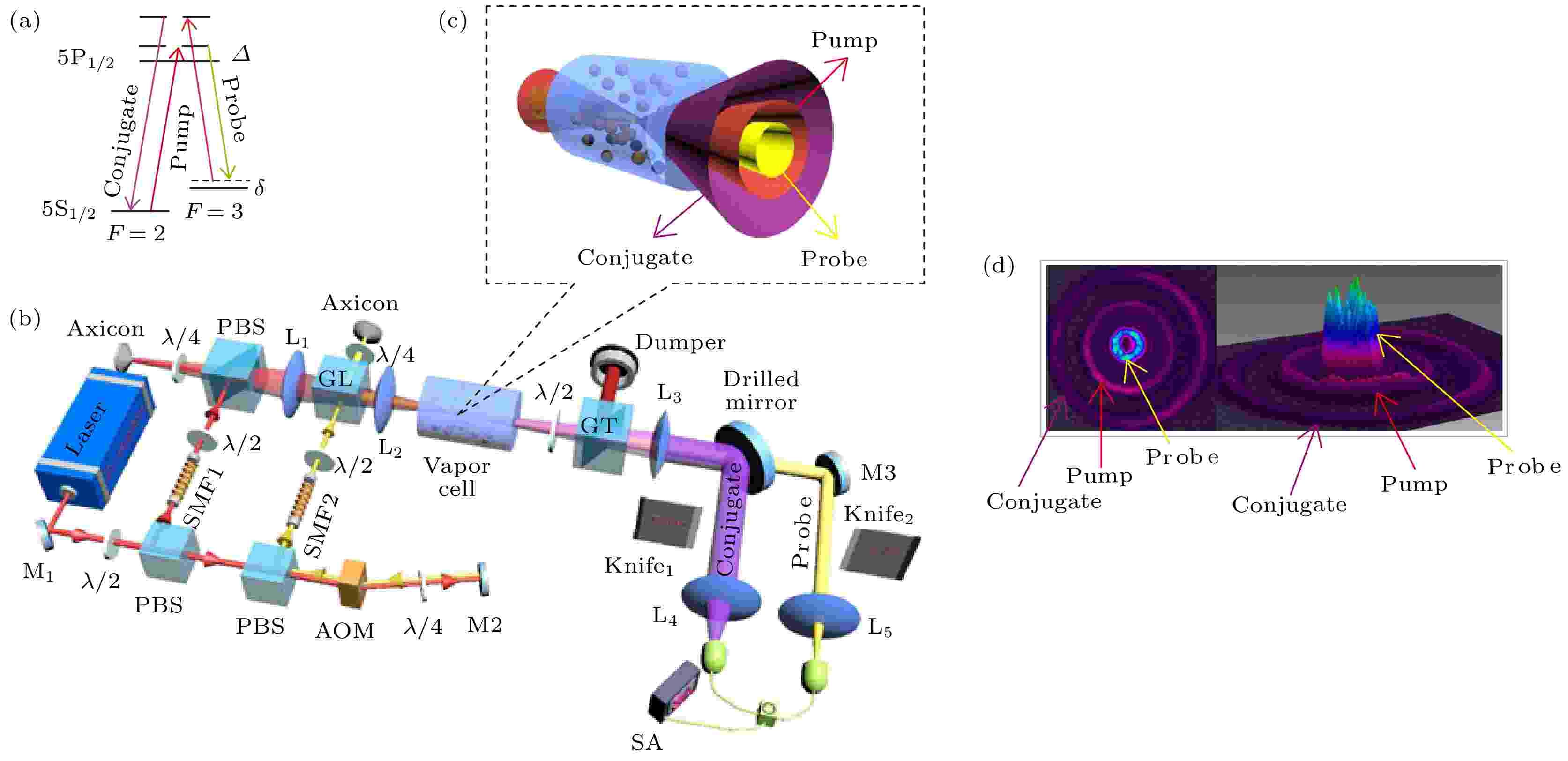
EDITOR'S SUGGESTION
2022, 71 (16): 160306.
doi: 10.7498/aps.71.20220081
Abstract +
Multimode quantum correlations and entanglements has drawn much attention recently due to its importance for both fundamental science and the future development of quantum information processing and quantum communication. Here, by using a four-wave mixing process with a conical pump beam and a conical probe beam, we experimentally generate the multimode quantum correlations between a conical probe beam and a conical conjugate beam, and we also observe about –2.6-dB intensity-difference squeezing between these two conical beams. In addition, we find the optimal value of each parameter in this scheme for further applications. Besides, the multi-spatial-mode nature of the generated quantum correlated beams is shown by comparing the variation tendencies of the intensity-difference noise of the probe and conjugate beams under global attenuation and local cutting attenuation. Our scheme may find potential applications in quantum information processing and quantum communication.

2022, 71 (16): 160501.
doi: 10.7498/aps.71.20220436
Abstract +
With the complexity of problems in reality increasing, the sizes of deep learning neural networks, including the number of layers, neurons, and connections, are increasing in an explosive way. Optimizing hyperparameters to improve the prediction performance of neural networks has become an important task. In literatures, the methods of finding optimal parameters, such as sensitivity pruning and grid search, are complicated and cost a large amount of computation time. In this paper, a hyperparameter optimization strategy called junk neuron deletion is proposed. A neuron with small mean weight in the weight matrix can be ignored in the prediction, and is defined subsequently as a junk neuron. This strategy is to obtain a simplified network structure by deleting the junk neurons, to effectively shorten the computation time and improve the prediction accuracy and model the generalization capability. The LSTM model is used to train the time series data generated by Logistic, Henon and Rossler dynamical systems, and the relatively optimal parameter combination is obtained by grid search with a certain step length. The partial weight matrix that can influence the model output is extracted under this parameter combination, and the neurons with smaller mean weights are eliminated with different thresholds. It is found that using the weighted mean value of 0.1 as the threshold, the identification and deletion of junk neurons can significantly improve the prediction efficiency. Increasing the threshold accuracy will gradually fall back to the initial level, but with the same prediction effect, more operating costs will be saved. Further reduction will result in prediction ability lower than the initial level due to lack of fitting. Using this strategy, the prediction performance of LSTM model for several typical chaotic dynamical systems is improved significantly.
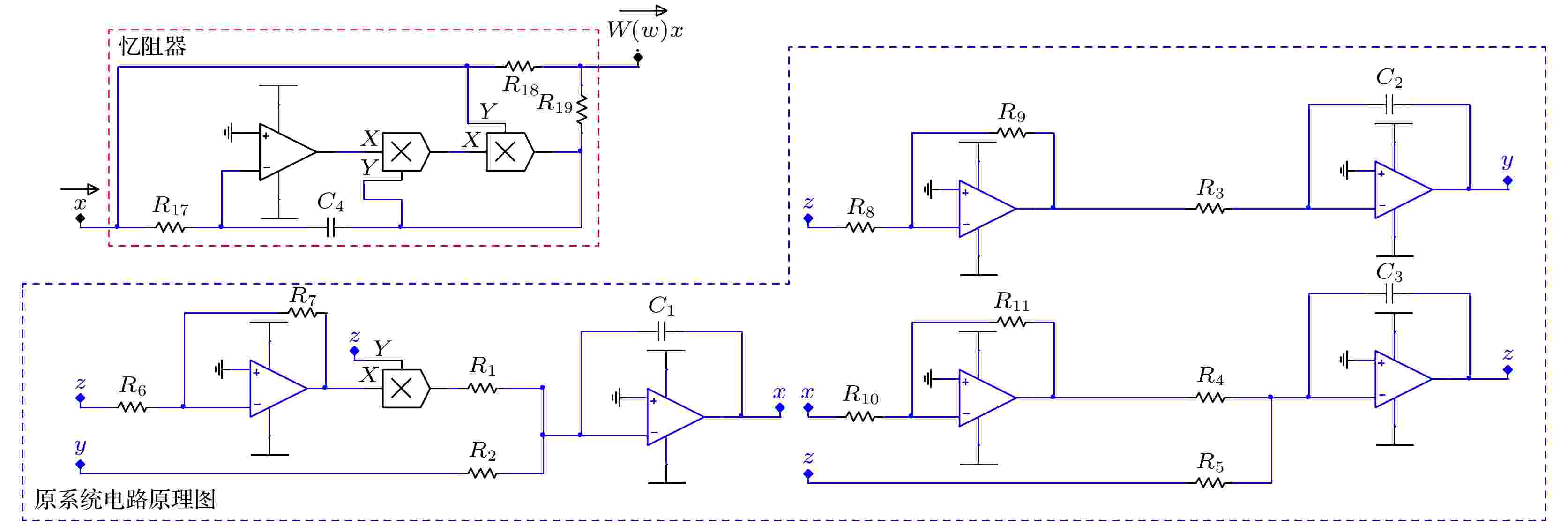
2022, 71 (16): 160502.
doi: 10.7498/aps.71.20220593
Abstract +
Using memristors to construct special chaotic systems is highly interesting and meaningful. A simple four-dimensional memristive chaotic system with an infinite number of coexisting attractors is proposed in this paper, which has a relatively simple form but demonstrates complex dynamical behavior. Here, we use digital simulations to further investigate the system and utilize the bifurcation diagrams to describe the evolution of the dynamical behavior of the system with the influence of parameters. We find that the system can generate an abundance of chaotic and periodic attractors under different parameters. The amplitudes of the oscillations of the state variables of the system are closely dependent on the initial values. In addition, the experimental results of the circuit are consistent with the digital simulations, proving the existence and feasibility of this memristive chaotic system.

2022, 71 (16): 160701.
doi: 10.7498/aps.71.20220307
Abstract +
High-energy synchrotron radiation source, as a large scientific device, is under construction in Beijing, China. This device is one of the fourth-generation synchrotron radiation sources with the highest brightness in the world. It will provide an important support platform for basic science and engineering science. As a kind of high-precision large-scale measurement equipment, laser tracker is used mainly in high-energy particle accelerator equipment installation, precision poses dynamic measurement and antenna feed dynamic motion precision engineering measurement field. At the construction site of high energy synchrotron radiation source, the laser tracker is often used to calibrate and pre-collimate the high energy source magnet equipment and carry on the tunnel measurement . However, the laser tracker is easily affected by the vibration of the surrounding environment, and the adverse vibration seriously affects its measurement accuracy and even causes the equipment to damage. In order to effectively control the influence of environmental vibration and ensure good static bearing capacity, a broadband vibration isolator for laser tracker is proposed. It is installed in the leg position of the triangular bracket of the laser tracker, which ensures the vibration isolation performance and good bearing capacity. For the above system, the equivalent single freedom nonlinear dynamic differential equation is established, and the steady-state response solution of the broadband isolator is obtained by using the complex variable-average method. The numerical finite element method is used to verify the correctness of the theoretical model and corresponding calculation results. On this basis, the stability of a nonlinear system is analyzed by harmonic balance method, and the influence of key designing parameter K3 on vibration isolation performance is considered. Combined with the complexity of the actual working environment of laser tracker, a variety of typical working conditions are set up for test, including long time static pressure test, vertical impact excitation and lateral displacement excitation tests, to evaluate the static stability and vibration control effect of broadband isolator. The experimental results show that the maximum static displacement of the laser tracker is about 2×10–5 m under static pressure in a long time, and the maximum static load is within the allowable error range. When the occasional impacting is triggered, the installation of broadband isolator can make the combination quickly restore stability in about 2.95 s, exhibiting better vibration isolation performance. Under different dynamic loads, by comparing the acceleration frequency response curves of the laser tracker with and without the isolator, in the frequency band below the fundamental frequency of the laser tracker, the attenuation rate of the combined system can be up to about 97% with and without the vibration isolator. In the frequency band above the fundamental frequency, the attenuation rate of the combined system with and without the vibration isolation system can reach up to about 88%, and the effective vibration isolation frequency band is extended. The broadband vibration isolator meets all technical requirements.
ATOMIC AND MOLECULAR PHYSICS

2022, 71 (16): 163301.
doi: 10.7498/aps.71.20220474
Abstract +
In order to obtain the maximum characteristic intensities of the up-conversion luminescence in GdTaO4:RE/Yb(RE = Tm, Er) series, we establish the regression equation between the luminescent intensity of the phosphors and the rare earth doping concentration upon the 980 nm laser excitation based on the experimental optimization design. The Tm3+/Yb3+ doping samples are combined with the uniform design and quadratic general rotation combination design, meanwhile the Er3+/Yb3+ doping samples are optimized by the uniform design and cubic orthogonal phosphor step by step. The relationship between concentration and luminous intensity is analyzed. The results show that the changes of concentration of RE3+ (RE = Tm, Er) and Yb3+ can exert a significant effect on luminous intensity, and there exist extreme points of luminescent intensity in the test space. By solving the regression equation, we obtain the optimal doping concentration. The optimal samples are also prepared by the high-temperature solid state method. The XRD diffraction patterns of the optimal samples are analyzed. The results show that the samples are of pure phase, the doping of Li+ flux will inhibit the generation of reaction impurity phase, and the doping of rare earth will shift the diffraction peak to a high angle, with the peak shape remaining unchanged. The relationship between excitation power and luminescent intensity is analyzed. The results show that the blue light emission of Tm3+/Yb3+ co-doped phosphor is a three-photon process, and the green light emission of Er3+/Yb3+ co-coped phosphor is a two-photon process. The relationship between sample temperature and luminescent intensity is analyzed. The luminescent intensity of the sample decreases with the increase of the temperature, indicating temperature quenching. Finally, the quenching activated energy of the sample is calculated.
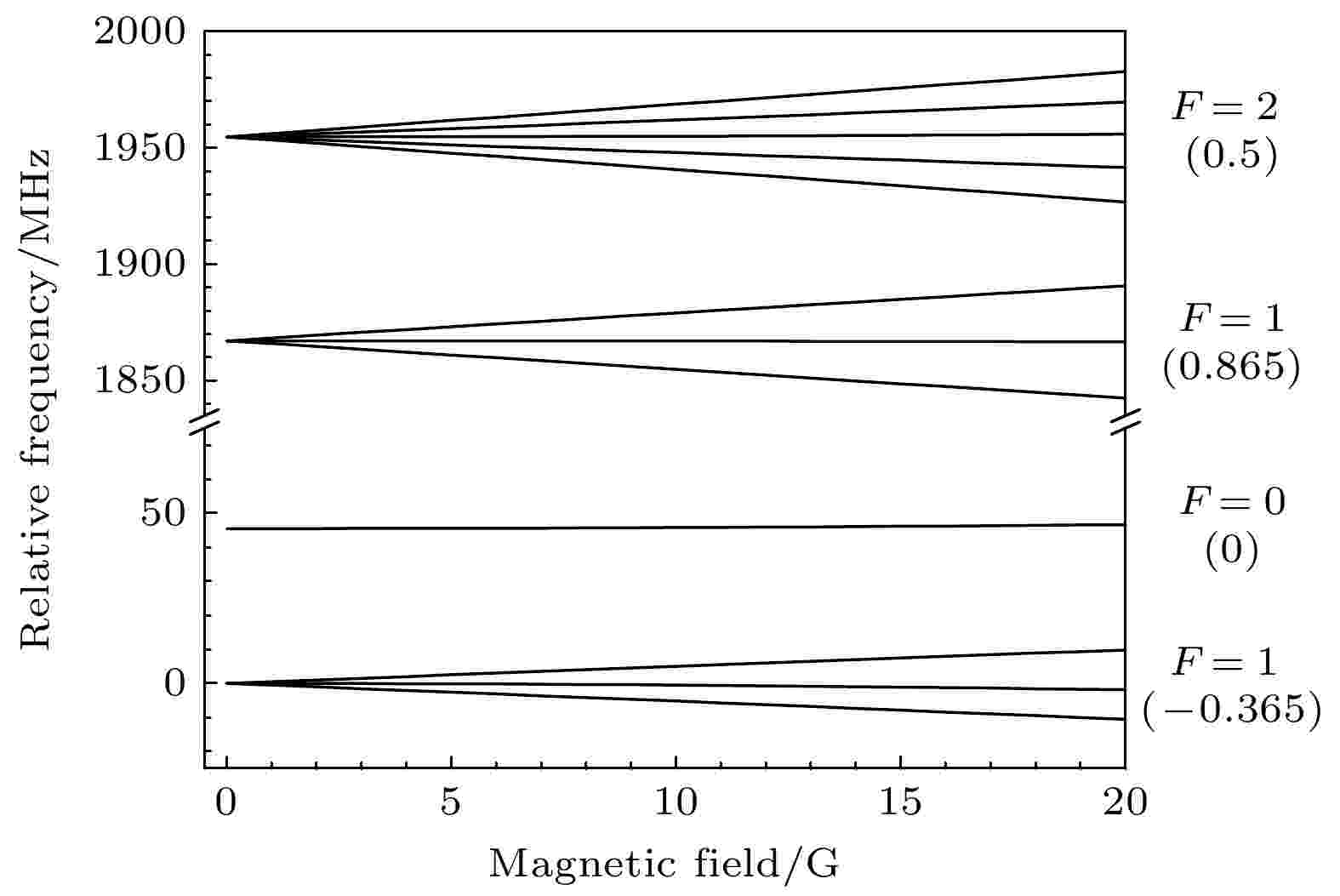
EDITOR'S SUGGESTION
2022, 71 (16): 163701.
doi: 10.7498/aps.71.20220304
Abstract +
Laser cooling and magneto-optical trapping of molecules is regarded as one of the state-of-the-art research fields in physics, which possesses broad applications in exploring fundamental physics beyond the Standard Model, quantum many-body physics, cold/ultracold chemistry and collision studies and so forth. Owing to the characteristic of highly diagonal Franck-Condon factors, lower saturation irradiance and larger scattering rate, the CaH molecule has been proposed as a promising candidate for laser cooling and magneto-optical trapping ever since 2004. Taking advantage of the multi-energy-level rate equation as well as the dual frequency effect, we evaluate the damping and trapping forces contained in the optical transitions of $ {\mathrm{A}}^{2}{\mathrm{Π}}_{1/2}\leftarrow {\mathrm{X}}^{2}{\mathrm{Σ }}^{+} $ and ${\mathrm{B}}^{2}{\mathrm{Σ }}^{+}\leftarrow {\mathrm{X}}^{2}{\mathrm{Σ }}^{+}$ , analyze the cooling and trapping performance for different laser polarization sets, power values and detunings of four laser components, and determine the variations in the damping and trapping forces due to an additional frequency component. It is discovered that if the laser polarization is set to be σ-σ+σ+σ+σ+, the detuning for the second laser component is Γ$ {\mathrm{A}}^{2}{\mathrm{Π}}_{1/2}\leftarrow {\mathrm{X}}^{2}{\mathrm{Σ }}^{+} $ , both of which reach the optimal values under the current scope of the research and exhibit better performance than the CaF molecule. Our results, on one hand, not only offer an ideal method to comprehend the CaH MOT in theory but also help design the CaH MOT experiment or even achieve the Bose-Einstein condensation (BEC) of cold diatomic molecules. On the other hand, alkaline-earth-metal monohydrides (AEMHs) such as CaH, SrH and BaH are well-known for their permanent electric dipole moment, therefore these trapped diatomic molecules can be utilized to untangle the mechanism of dipole-dipole interaction, thus paving the way to realizing the molecular entanglement and quantum computing. More interestingly, current experimental systems for the non-zero measurement of the electron’s electric dipole moment (eEDM), including ThO, YbF and HfF+, still cannot be conducted simultaneously under the laser cooling and magneto-optical trapping technique while maintaining the ease of full polarization and internal co-magnetometry, all of which undoubtedly can increase the coherent measurement time and hence the statistical sensitivity, as well as the immunity to the systematic sensitivity. Previous studies reported that AEMHs share some similar characters with alkaline-earth-metal monofluorides (AEMFs) such as in electron correlation effects, however, the hyperfine energy level structures of AEMHs are relatively simpler than those of AEMFs, and AEMHs are prone to being polarized under the externally applied electric field. All of these lead to the trend that AEMHs may possess the dual character that it can be not only laser cooled and trapped in a MOT but also adopted as an candidate to measure the eEDM. Therefore, our work lays a substantial foundation for the theoretical and experimental study of SrH and BaH that inevitably will contribute to the exploration of the CP violation and new physics beyond the Standard Model on a scientific platform based on cold polar molecules, which is obviously different from large facilities such as the Large Hadron Collider.
ELECTROMAGNETISM, OPTICS, ACOUSTICS, HEAT TRANSFER, CLASSICAL MECHANICS, AND FLUID DYNAMICS
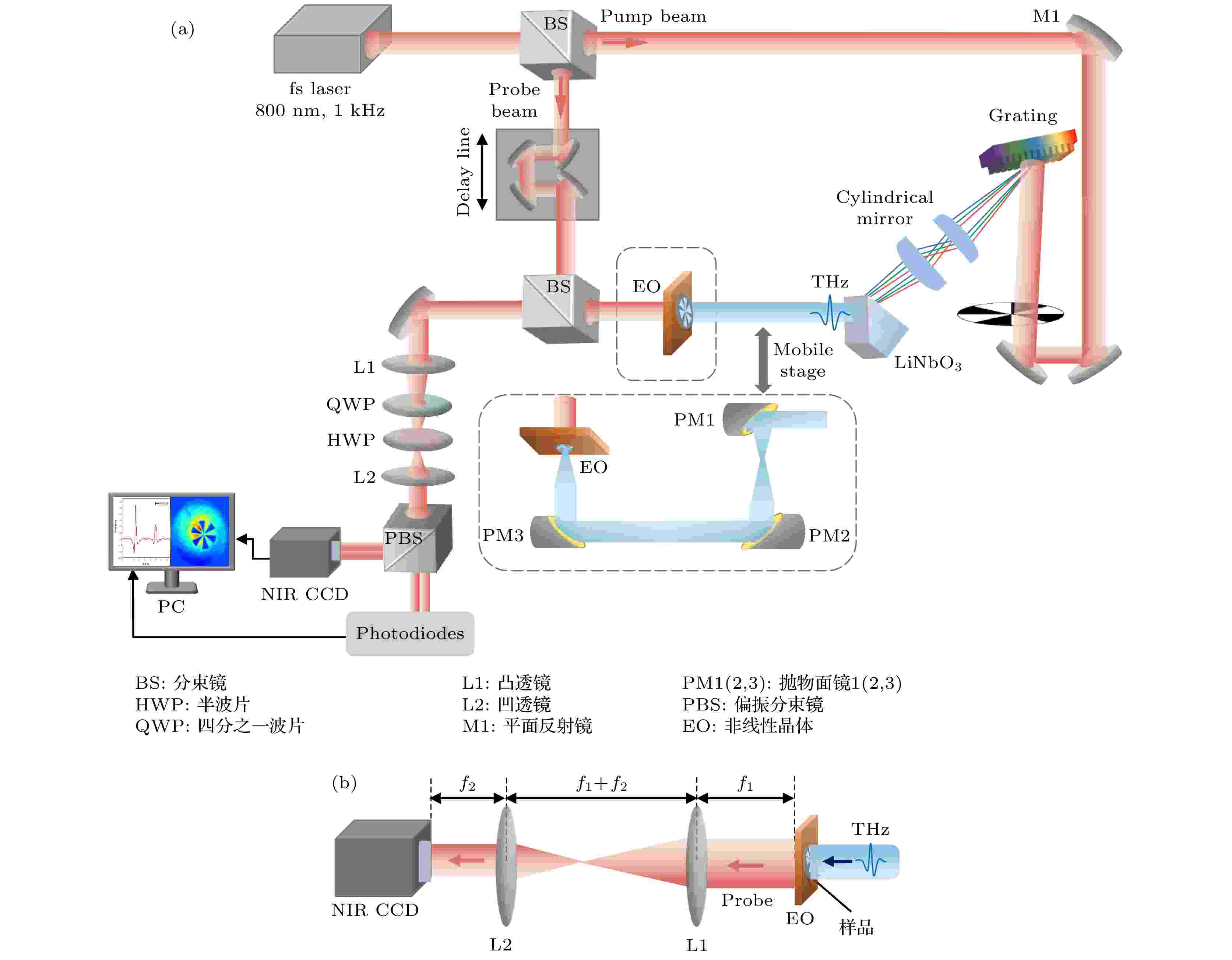
2022, 71 (16): 164201.
doi: 10.7498/aps.71.20220131
Abstract +
In this paper, a real-time near-field high-resolution THz (terahertz, THz) spectral imaging system is designed and built by using optical rectification and wave-front tilting to generate strong-field terahertz signals and based on electro-optical detection. The system can switch between large beam THz imaging and tight-focusing THz imaging, which provides a method for implementing the integrated application of the system. Since the imaging is based on the traditional THz time-domain spectroscopy method, the spectral amplitude and phase information of the sample can be obtained simultaneously. The spectral resolution is about 15 GHz. A series of micromachining samples is measured and studied by using the system, and the performance of the imaging system is analyzed by using the micron structure. The results show the superiority of the real-time high-resolution terahertz spectral imaging system in terms of spatial resolution and imaging speed. The real-time imaging frame rate is up to 20 f/s (1200 frames/min) at 1024 pixel × 512 pixel. In the large-field THz imaging, the optimal spatial resolution reaches λ/4 at 1.5 THz. In the tightly focused THz imaging, the optimal spatial resolution reaches λ/12 at 0.82 THz. These properties make the system suitable for the applications in biomedical imaging, bbological effects and other areas .
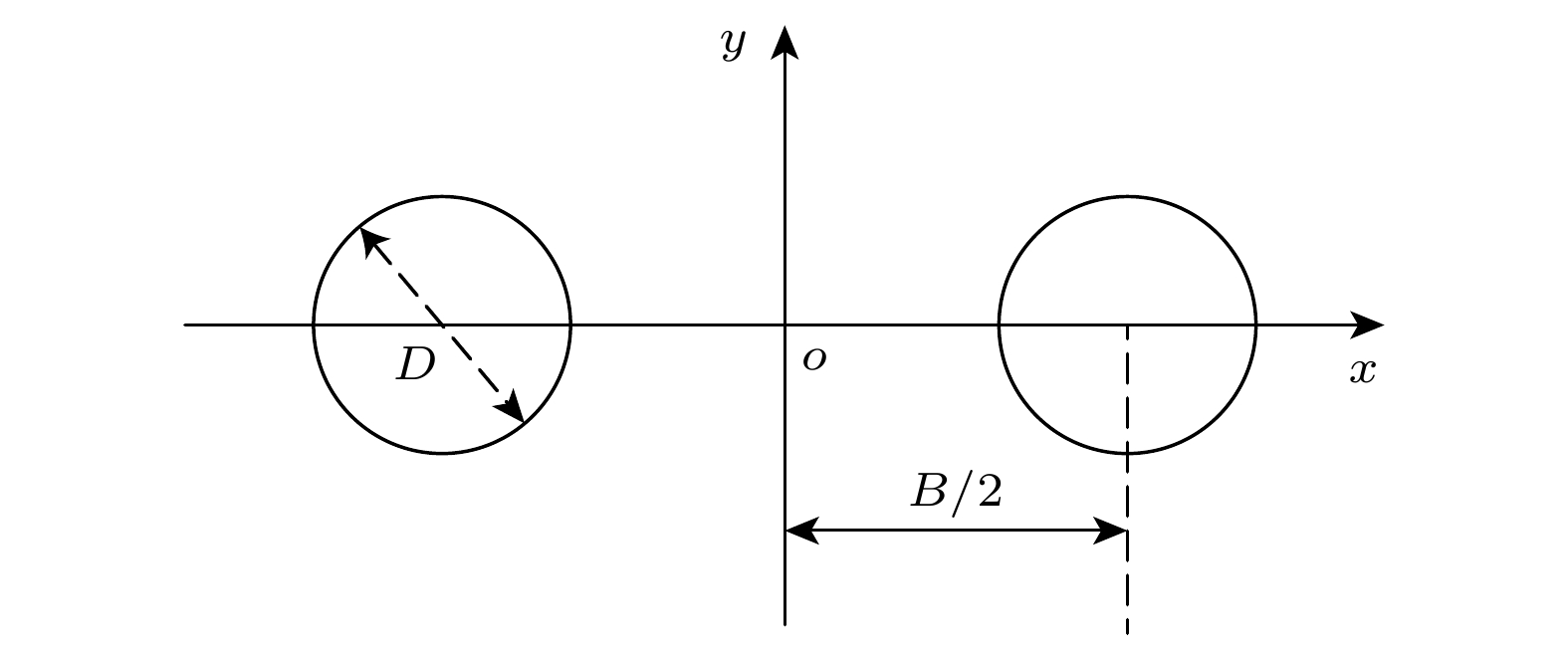
2022, 71 (16): 164202.
doi: 10.7498/aps.71.20220434
Abstract +
In order to achieve the resolution comparable to the resolution of a monolithic primary mirror telescope and make the imaging quality of the imaging system reach or approach to the diffraction limit, the submirrors of the segments telescope should ensure co-phase splicing. To solve the problem of phase error detection, a high-precision piston error detection method is proposed based on convolutional neural network (CNN). By setting a mask with a sparse multi-subpupil configuration on the exit pupil of the imaging system, a point spread function (PSF) image dataset that is extremely sensitive to the piston error is constructed. According to the characteristics of this dataset, a high-performance CNN model is built. And the best detection range of CNN is tested. The simulation results show that a single network can accurately output the piston error of one or more submirrors in the capture range slightly less than one wavelength. When the single network is applied to the six-submirror imaging system, the detection precision of the piston error reaches an RMS value of 0.0013λ (here, RMS stands for root mean square). And the method has good robustness to residual tip-tilt error, wavefront aberration, and CCD noise, light source bandwidth. The method is simple and fast, and can be widely used to detect the piston error of the segments.
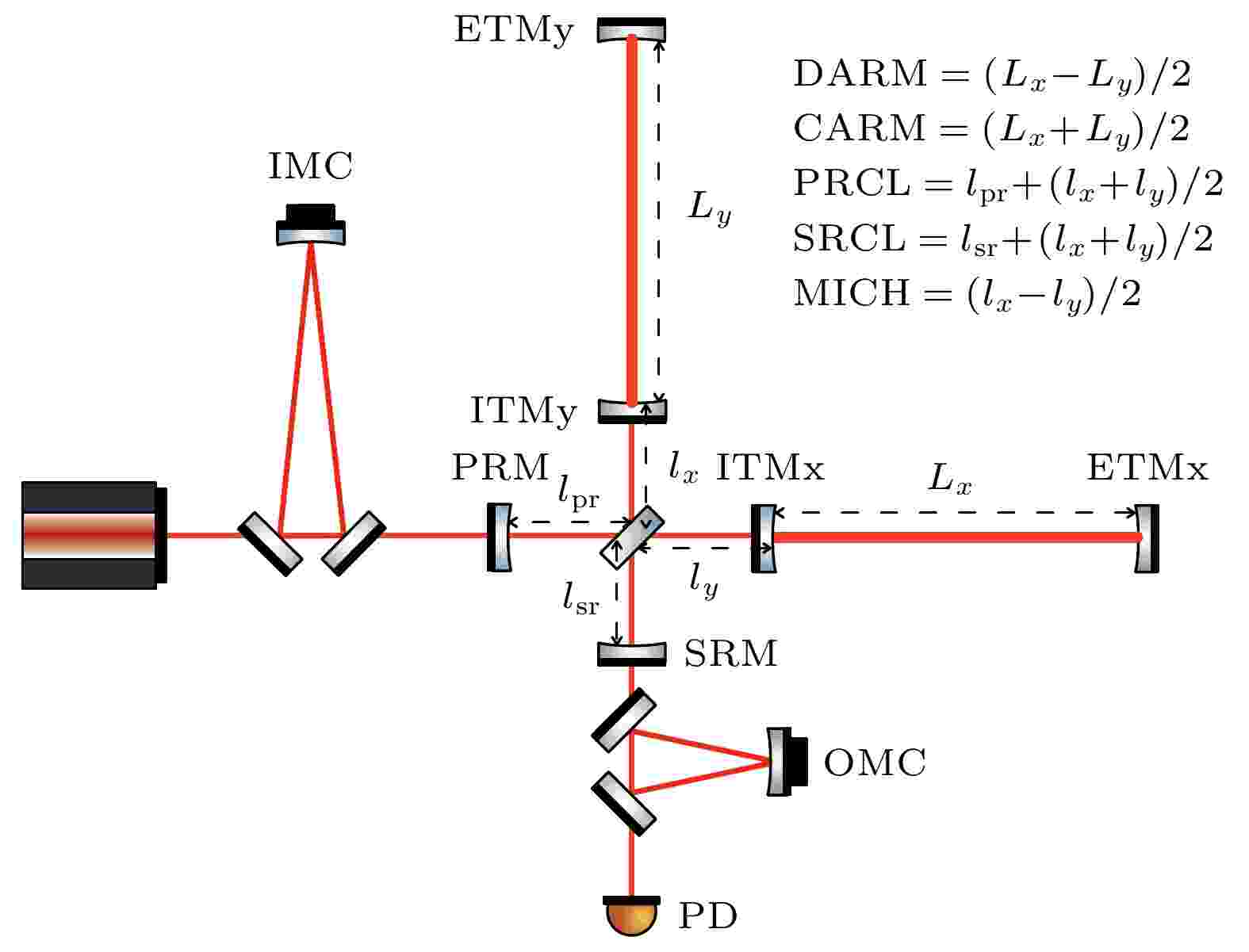
EDITOR'S SUGGESTION
2022, 71 (16): 164203.
doi: 10.7498/aps.71.20220552
Abstract +
Gravitational waves (GWs), predicted by the general relativity of Albert Einstein, are ripples in space-time caused by massive accelerating objects. Since the first direct observation of GWs in 2015, more and more binary black hole mergers and neutron star merger were detected by the laser interferometer gravitational-wave observatory (LIGO) and the Virgo interferometric detector. The construction of the third-generation (3G) gravitational wave detector(GWD), whose sensitivity is ten times that of the second-generation (2G) GWD (Advanced LIGO and Virgo), can not only push the gravitational wave astronomy towards the edge of the observable universe, but also test the fundamental laws of physics and study the nature of matter. By utilizing the abandoned underground mines, Shanxi university proposes to construct a 3G ground-based gravitational wave detector with an arm length of 10 km and a strain sensitivity of 10–24 Hz–1/2, improving the location accuracy of wave source by participating in the global GWD network. The construction of 3G GWD has many technical challenges, including ultrahigh large-scale vacuum system, ultrastable seismic isolation system, high-precision control system, high-quality laser and quantum source. Theoretically, the sensitivity of GWD with equal arm length is not limited by the laser source noise. However, in the actual scenario, the sensitivity is limited by the differences in arm length, arm cavity linewidth, arm reflectivity, arm mass, arm power, and the laser parameters. In this work, based on the design sensitivity (10–24 Hz–1/2) of dual-recycled Fabry-Perot Michelson interferometer, we propose the requirements for an ultra low-noise laser, including wavelength, amplitude noise, frequency noise, beam pointing noise and fundamental mode purity. The results show that in order to achieve the design sensitivity at the Fourier frequency of 100 Hz, the wavelength of the laser source should be 1.5 μm, the output power should be higher than 200 W, the amplitude noise should be better than 10–8 Hz–1/2, and the frequency noise should be better than 100 Hz/Hz1/2. To achieve the sensitivity of 10–24 Hz–1/2 at 10 Hz analysis frequency, the requirements for the amplitude and frequency noise of the laser source are much more stringent. This study lays a solid foundation for the analysis of laser source noise and the decomposition of interferometer indexes .
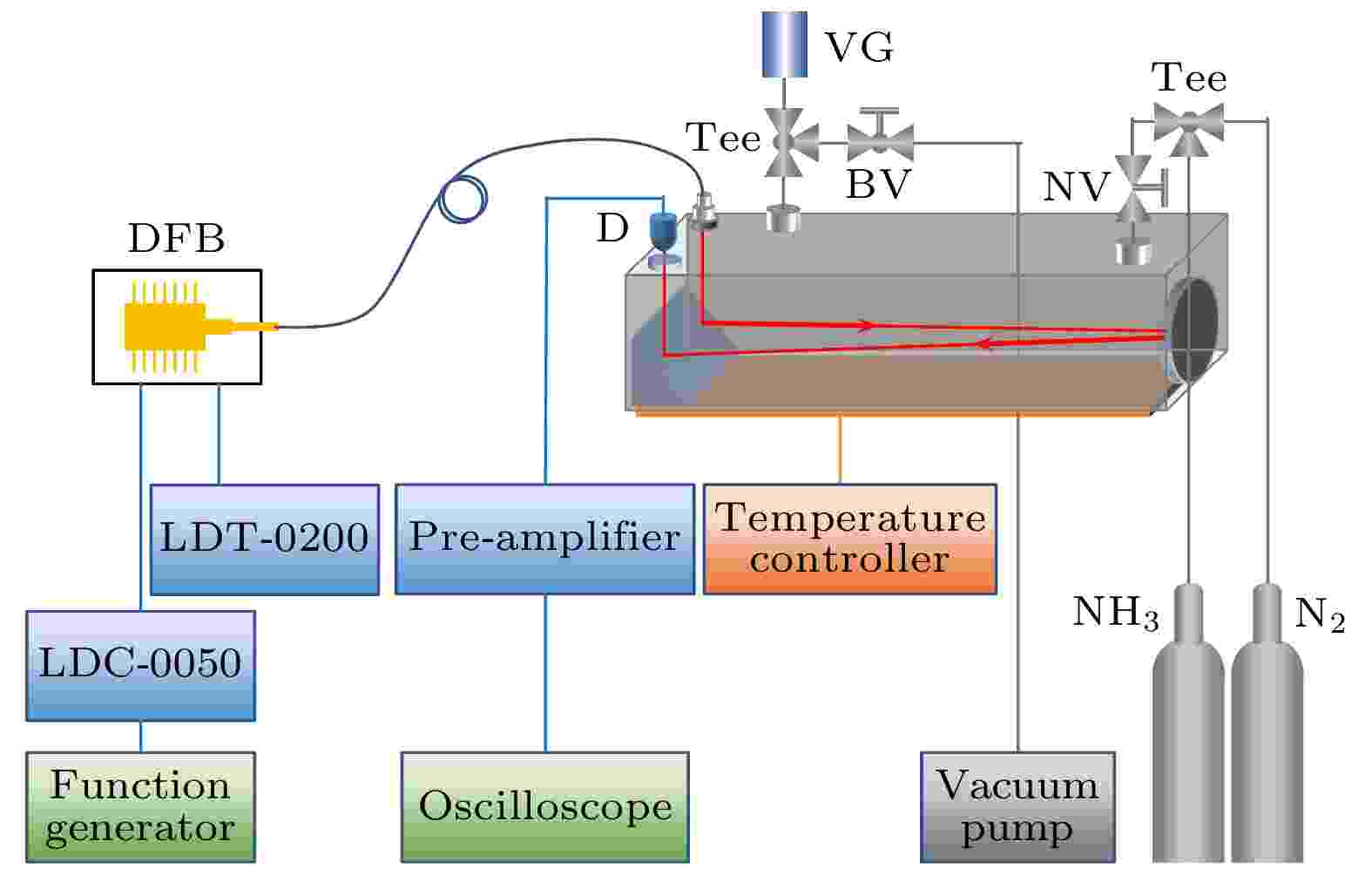
2022, 71 (16): 164204.
doi: 10.7498/aps.71.20220504
Abstract +
Spectral parameters of NH3 in a range of 4296–4302 cm–1 in the HITRAN database are different from the actual situation as they are derived from theoretical calculations. In order to correct the spectral parameters of NH3 in this range in HITRAN, tunable diode laser absorption spectroscopy (TDLAS) technology and metrological theory are used to measure the absorption spectrum high-purity NH3 in the range of 4296–4302 cm–1 at 2–10 Torr. The line intensity and self-broadening coefficient of the main absorption line of NH3 in this band are retrieved and their uncertainty are calculated by comprehensively considering main factors including pressure, temperature, optical path of gas cell, wavenumber and line shape fitting. The discrepancies between our measured line intensities and latest peer-measured results are within 20%. The biases between our self-broadening coefficients and the ones in HITRAN2020 are within 14%. Their uncertainties are in a range of the 0.63–2.7% and 0.77–5.4%, respectively, which are smaller than the uncertainty range of 10–20% in the HITRAN database. Some of the measured spectral parameters are not recorded in HITRAN. The experimental results in this work are of significant reference in supplementing and correcting the HITRAN spectral parameters of NH3 in the range of 4296–4302 cm–1.
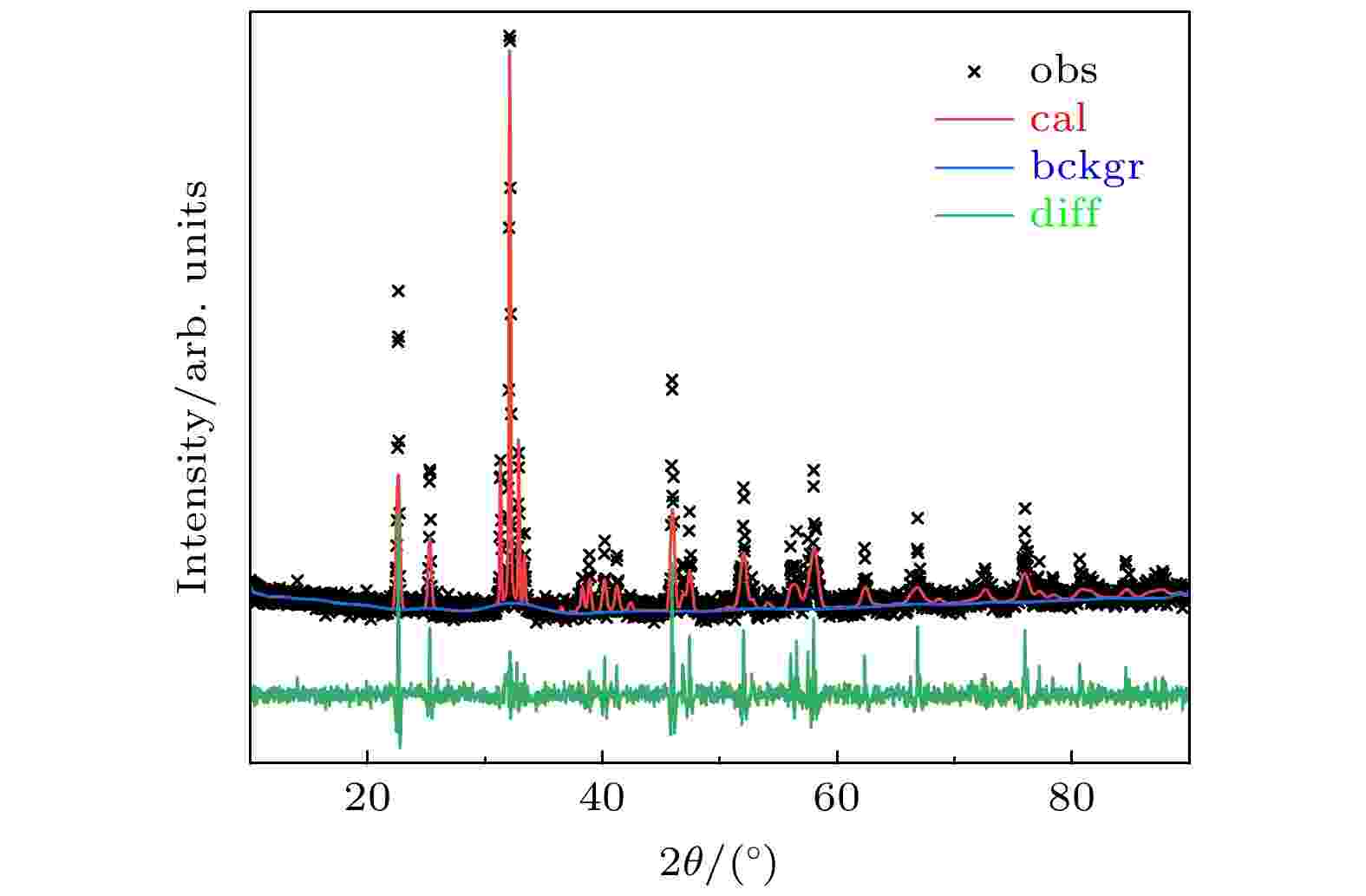
2022, 71 (16): 164206.
doi: 10.7498/aps.71.20220196
Abstract +
GdScO3 and Yb:GdScO3 single crystals are grown by the chzochralski method in nitrogen atmosphere, and they are characterized by X-ray diffraction(XRD), Raman spectra and transmission spectra . Their lattice parameters, atomic coordinates and temperature factors are determined by Rietveld refinement. It is found that the cell volume of GdScO3 and Yb:GdScO3 annealed in air atmosphere increase, but after these sample are annealed in H2 atmosphere their cell volumes decrease. Based on these results, we demonstrate that the crystal grown in nitrogen atmosphere has interstitial oxygen atoms, and the number of interstitial oxygen atoms in the sample annealed in air atmosphere increases, but that annealed in H2 atmosphere decreases. The Raman peaks of 155 cm–1, 298 cm–1, 351 cm–1 of GdScO3 are weakened or even disappear when Yb3+ ions are doped into it. The Raman spectra of the Yb:GdScO3 unannealed and annealed in H2 and air atmosphere are nearly consistent with each other, which indicates that Raman spectrum is insensitive to the defects such as oxygen interstitial caused by annealing. It is suggested that the optical loss of GdScO3 in the visible wavelength originates mainly from the defect energy level absorption of oxygen interstitial, and transmissivity of Yb:GdScO3 increases when it is annealed in hydrogen atmosphere, which results from the fact that ytterbium ion can reduce some interstitial oxygen atoms. When GdScO3 and Yb:GdScO3 are annealed in air or hydrogen atmosphere, the optical absorption loss of GdScO3 and Yb:GdScO3 in a wavelength range of 1000–3000 nm increase due to the trap level produced near the conduction or valence band. The effect on structure and spectral properties of Yb:GdScO3 and GdScO3 are explored preliminarily, which is useful for further studying and optimizing laser performance of rare earth doped GdScO3 crystal.

2022, 71 (16): 164301.
doi: 10.7498/aps.71.20212445
Abstract +
The properties of ultrasonic nonlinear surface wave in the quasilinear region are investigated. In this work the governing equation of particle displacement potential is employed for surface wave in isotropic elastic solid with quadratic nonlinearity. Then, the quasilinear solution of the nonlinear surface wave is obtained by the perturbation method, and the absolute nonlinear parameter of the surface wave is derived. Subsequently, the main components of the second harmonic surface wave solution are discussed. A finite element model for the propagating nonlinear surface wave is developed, and simulation results of the nonlinear surface wave displacements agree well with the theoretical solutions, which indicates that the proposed theory is effective. Finally, the properties of wave propagation and the characteristic of the nonlinear parameter for the surface wave are analyzed based on the theoretical solutions. It is found that the second harmonic surface wave consists of cumulative and non-cumulative displacement terms. The cumulative displacement term is related to the self-interaction of the longitudinal wave component of the surface wave. However, its amplitude is larger than that of the pure longitudinal wave when the initial excitation conditions and propagation distances are the same. The nonlinear parameters for surface and longitudinal waves are related to each other, and an explicit relationship is found, which can be determined by the second-order elastic coefficients of the material. The propagation properties of nonlinear surface waves and the measurement method of absolute nonlinear parameters are also discussed, which will benefit the practical application of nonlinear surface waves.
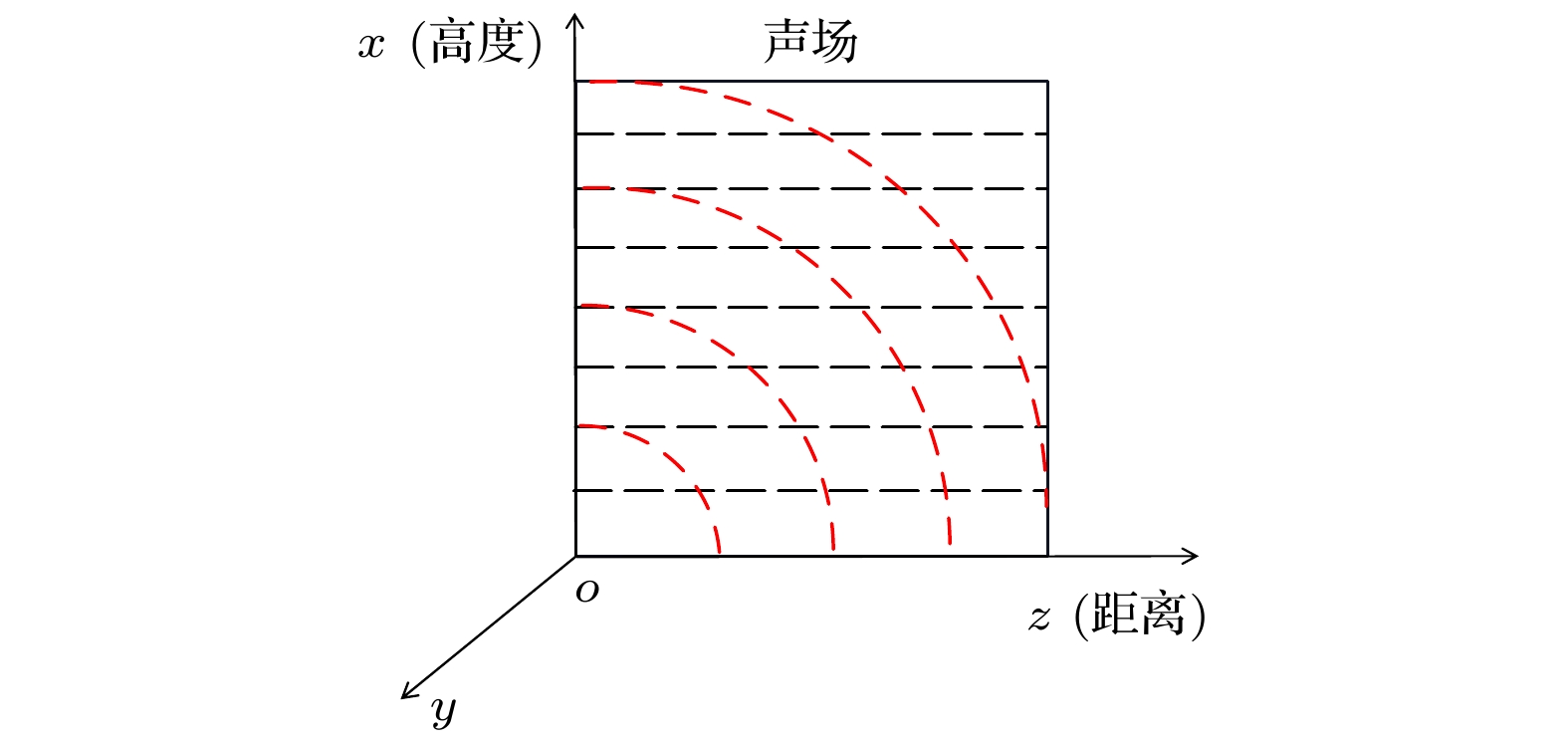
2022, 71 (16): 164302.
doi: 10.7498/aps.71.20220484
Abstract +
Based on the acousto-optic effect and the Gladstone–Dale relationship, the relationship about variations of the refractive index of the isotropic homogeneous atmospheric medium and the inhomogeneous atmospheric medium with the sound pressure under the disturbance of the plane sound field is derived. Models for the transmission of plane light waves and Laguerre-Gaussian beams through homogeneous atmospheric medium and inhomogeneous atmospheric medium disturbed by plane acoustic waves are established. The results show that the refractive index distribution of the homogeneous atmospheric medium exhibits a homogeneous periodic distribution after being disturbed by the plane sound field. For large-scale angles of longitudinal variation of atmospheric pressure, the plane sound field has little effect on the distribution of the refractive index of the inhomogeneous atmosphere. For small-scale angles, the inhomogeneous atmospheric refractive index gradually decreases with height and fluctuates with the influence of sound pressure. When the plane acoustic wave disturbs the homogeneous atmospheric medium, the isophase plane of the plane light wave will fluctuate significantly due to the influence of the acoustic wave. The phase of the LG beam rotates and always returns to the original phase. When the plane acoustic wave disturbs the inhomogeneous atmospheric medium, the phase change of the plane light wave will change periodically with the change law of the sound wave. The overall optical path is an inclined plane, but due to the disturbance of the sound wave, the optical path will fluctuate. The phase of the LG beam still rotates, but unlike the homogeneous medium, its phase does not return to its original phase due to the change of its refractive index with height.
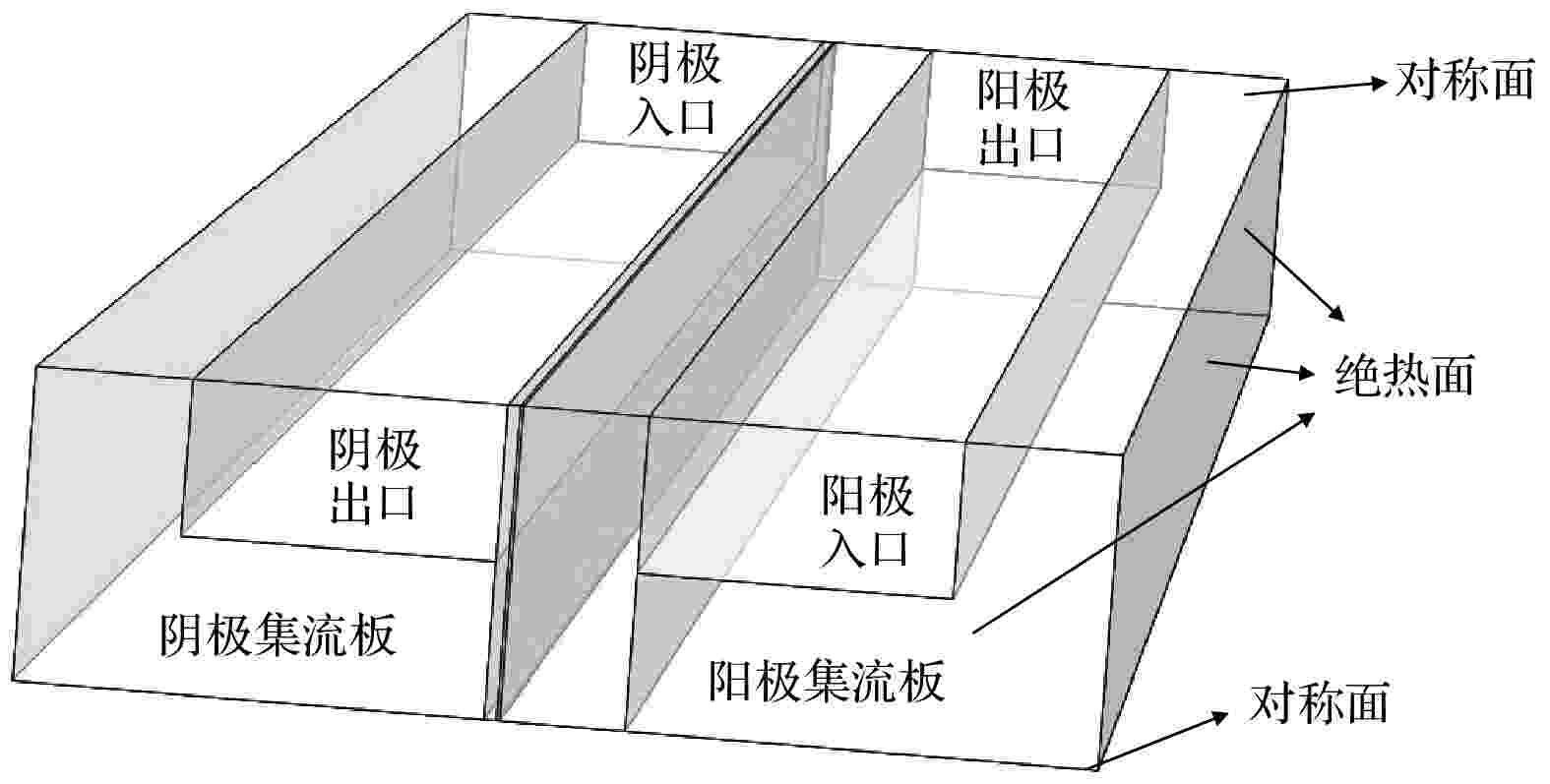
2022, 71 (16): 164401.
doi: 10.7498/aps.71.20220031
Abstract +

2022, 71 (16): 164701.
doi: 10.7498/aps.71.20220417
Abstract +
Reynolds stress model has always been the frontier and challenging problem in turbulence model theory research, where improving numerical robustness is the key to its wide application in engineering. Referring to the classical $k$ -$kL$ turbulence model, a new ${\nu_t}$ -scale equation is constructed and used to couple the SSG/LRR model to form a so-called SSG/LRR-${\nu_t}$ Reynolds stress model. Four benchmark cases, including zero pressure gradient turbulent plate boundary layer, airfoil wake flow, supersonic square duck flow and separated flow over NACA0012 airfoil at 45 degree angle of attack, are carried out to test the new turbulence model. At the same time, high-order numerical schemes are used to discretize the turbulence equations in order to assess its numerical robustness. The results are compared with those of SA eddy viscosity model and SSG/LRR-$\omega$ Reynolds stress model. It is shown that the ${\nu_t} $ -scale equation is strictly equal to zero at the viscous wall boundary. Compared with the traditional $\omega $ -scale, it has better numerical robustness. Along with this, the new model can be matched with the high-order numerical schemes and obtain a better efficiency in the mesh convergence. Moreover, the new model has the inherent advantage of Reynolds stress model in simulating the corner flow and has the potential in scale adaptive simulation of unsteady separated flow.

2022, 71 (16): 164702.
doi: 10.7498/aps.71.20220051
Abstract +
The regulating effect of magnetic field on magnetogasdynamic flow and heat transfer characteristics in circular tubes has important applications in many fields, but there is still a lack of relevant basic research. Considering the conductivity of the tube wall and the insufficient development of turbulence, the physical model and mathematical model of magnetogasdynamic flow in a circular tube under a given transverse magnetic field are constructed, and the numerical algorithm is designed within a theoretical framework of the finite volume method. The effect of factors including Hartman number (Ha) and wall conductivity ratio (C) on the flow and heat transfer characteristics are obtained through analyzing the distributions of velocity, turbulent kinetic energy, and temperature. Furthermore, the regulation mechanism of the transverse magnetic field is discussed by analyzing the spatial distribution of induced current, electromagnetic force and Joule heat. The results show that the distribution of velocity and the distribution of turbulent kinetic energy in the circular tube under a given transverse magnetic field are both anisotropic. The turbulent kinetic energy near the Hartmann boundary layer is much lower than that near the Roberts boundary layer, and the anisotropic distribution of velocity and turbulent kinetic energy become more and more evident with the increase of Ha and the extension of the flow. The transverse magnetic field has a suppression effect on the heat transfer in the tube. For different values of C, the average Nusselt number ($ \overline {Nu} $ ) shows a first-decreasing-and-then-increasing trend with Ha increasing, that is, there is a “saturation effect” in heat transfer suppression. When the wall conductivity is small (C $\leqslant $ 0.67), the change of $ \overline {Nu} $ under the condition of conductive wall is basically consistent with that of an insulating wall. However, when C exceeds a certain value (C $\geqslant $ 66.67), the $ \overline {Nu} $ under the condition of small Ha increases in comparison with that of the insulating wall, while the $ \overline {Nu} $ decreases under the condition of large Ha . The change of flow characteristics in the circular tube results from the variation of electromagnetic force under the coupling of magnetic field and fluid, while the change of heat transfer characteristics originates from the coupling effect of the suppression of turbulence and the Joule heating. When Ha is small, the suppression effect of the magnetic field on turbulence is dominant, and the $ \overline {Nu} $ decreases with the increase of Ha. When Ha exceeds a certain value (Ha $\geqslant $ 222), the large accumulation of Joule heat in the circular tube enhances the heat transfer, resulting in the increase of the $ \overline {Nu} $ with the continuous increase of Ha.
PHYSICS OF GASES, PLASMAS, AND ELECTRIC DISCHARGES

2022, 71 (16): 165201.
doi: 10.7498/aps.71.20220421
Abstract +
In the application of atmospheric pressure plasma jet, the influence of ambient gas cannot be ignored, especially in some specific scenarios which are highly sensitive to ambient particles. Coaxial double-tube plasma jet device is a promising method of controlling the chemical properties of jet effluent by restraining the mutual diffusion between jet effluent and ambient gas. In this work, the discharge characteristics and chemical properties of coaxial double-tube helium atmospheric pressure plasma jet at different flow rates of shielding gas are studied numerically, and the model is validated by experimental optical images. The results illustrate the enhanced discharge at the high flow rate, the weaker discharge at the low flow rate, and discharge behaviors without shielding gas as well. With the increase of shielded gas flow rate, the particle density increases in the discharge space, which can be attributed to the wider main discharge channel caused by the increase of shielding gas flow rate. In addition, the analysis shows the great difference in ion fluxes affected by the flow rate of the SG between the contour lines of different helium mole fractions. This study further reveals that different discharge positions have a great influence on the generation of nitrogen and oxygen particles, thus deepening the understanding of influence of shielding gas flow rate on discharge behavior, and may open up new opportunities for the further application of plasma jet.
CONDENSED MATTER: STRUCTURAL, MECHANICAL, AND THERMAL PROPERTIES
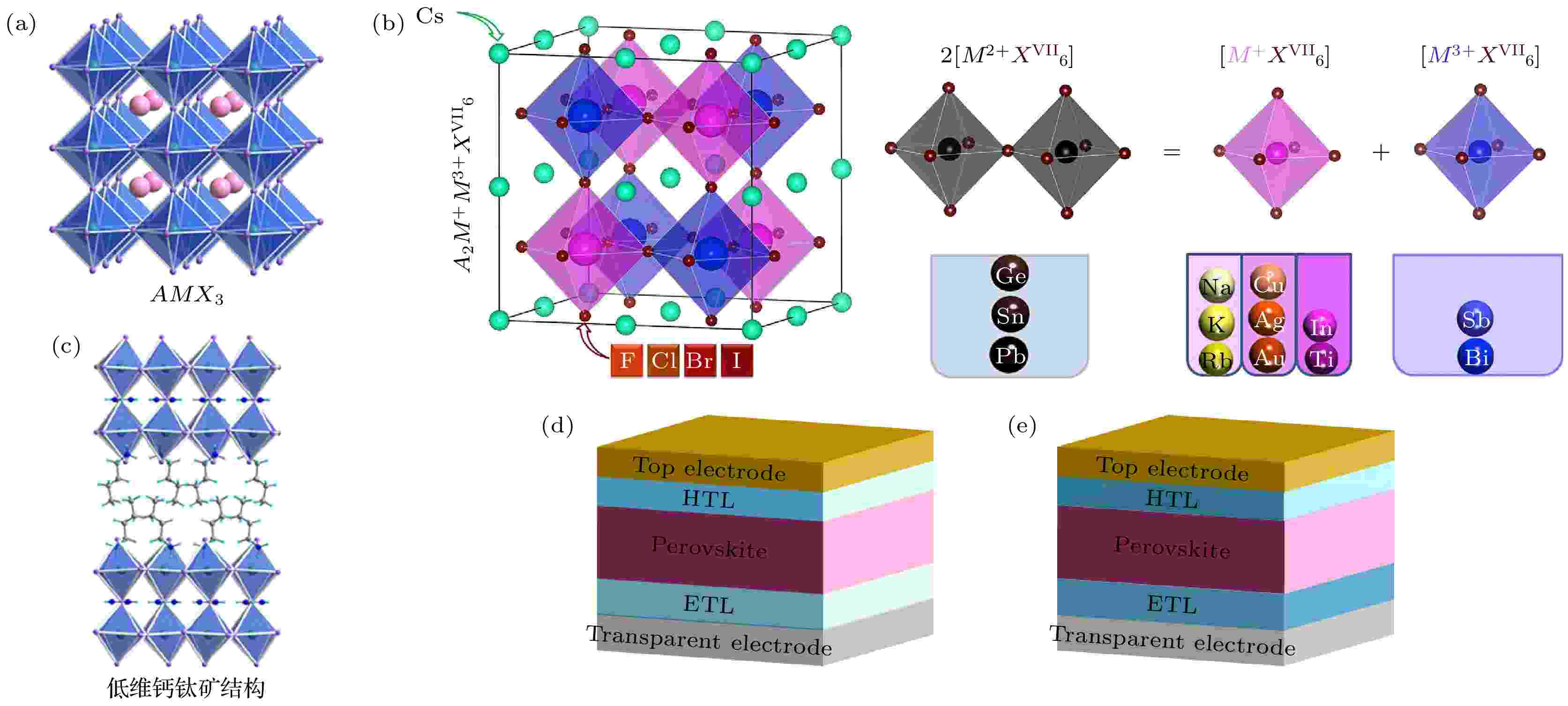
EDITOR'S SUGGESTION
2022, 71 (16): 166801.
doi: 10.7498/aps.71.20220359
Abstract +
Research on perovskite solar cells is prevalent because of their excellent photovoltaic performance. Most of the perovskite films are prepared by polycrystalline perovskite films and low-temperature solution method, thus inevitably creating a high density of defects, including point defects and extended defects. These defects can also be divided into two types: shallow-level defects and deep-level defects. The multiple types of defects are the main cause of nonradiative recombination, which will limit the enhancement of photovoltaic properties and stability of solar cell devices. In this paper, we review the latest advances in defect passivation and describe in detail the mechanisms of different methods to passivate defects at the surface and interface of perovskite films to reduce nonradiative recombination. We also summarize the research results about the defect passivation to reduce the deep energy level traps by Lewis acid and base, anion and cation, and the results about the conversion of defects into wide band gap materials as well. The effects of various strategies to modulate the mechanism of passivation of perovskite surface/interface defects are also elaborated. In addition, we discuss the intrinsic link between crystal defects and device stability, and provide an outlook on the feasibility of defect passivation strategies in future research.

2022, 71 (16): 166802.
doi: 10.7498/aps.71.20220439
Abstract +
Metal nanorods show excellent optical properties, since the plasmonic resonance frequency can be tuned by its aspect ratio and the optical field can be confined within a region of subwavelength, even within a nanometer region. It has the ability to flexibly modify the spontaneous emission properties of a nearby quantum emitter. However, it is unclear how the emission property changes when the metal nanorod has been deposited at the tips or coated on all sides with metal. In this work, the spontaneous emission enhancements of a two-level atom around a tailored nanorod with a wide variety of shapes, dimensions or materials are systematically investigated by the finite element method. Three different optical response models are adopted, including the classical local response approximation (LRA), the nonlocal hydrodynamic model (HDM), and the generalized nonlocal optical response model (GNOR). For a cylindrical nanorod with two endcaps, it is found that the resonance frequency shows large redshift and the emission enhancement peak increases as the endcap gradually changes from cone to cylinder of the same height. The resonance frequency shows small blueshift and the emission enhancement peak decreases slightly as the deposited metal of the conical endcaps changes from gold to silver. However, as the material of the cylinder also changes from gold to silver, becoming an all-silver nanostructure, an obvious blueshift can be detected at the resonance frequency and the emission enhancement peak rises sharply. For bimetal core-shell nanostructure, the shell can screen the surface plasmon of the core from being excited, and the plasmonic resonance associated with shell increases in proportion to the thickness of the shell. The emission enhancement peak for gold nanostructure appears to be blue-shifted when coated with silver. In contrast, it is red-shifted for silver nanostructure coated with gold.
CONDENSED MATTER: ELECTRONIC STRUCTURE, ELECTRICAL, MAGNETIC, AND OPTICAL PROPERTIES

EDITOR'S SUGGESTION
2022, 71 (16): 167101.
doi: 10.7498/aps.71.20220549
Abstract +
The miniaturization of thermoelectric devices raises a strong requirement for the excellent interfacial properties of thermoelectric elements. Thus, achieving a heterogeneous interface with low interfacial contact resistivity and high interfacial bonding strength is a prerequisite for the successful fabrication of high-performance and high-reliability Bi2Te3-based micro thermoelectric devices. In this work, we adopt the acid pickling method to modify the surface structure of Bi0.4Sb1.6Te3 material to synergistically optimize the interfacial properties of Bi0.4Sb1.6Te3/Ni thermoelectric elements. The acid pickling process effectively modulates the work function of Bi0.4Sb1.6Te3 material, which dramatically reduces the contact barrier height of Ni/Bi0.4Sb1.6Te3 heterojunction from 0.22 to 0.02 eV. As a consequence, the corresponding interfacial contact resistivity of the element is greatly reduced from 14.2 to 0.22 μΩ·cm2. Moreover, the acid pickling process effectively adjusts the surface roughness of the matrix, forming a V-shaped pit of 2–5 μm in depth on the substrate surface and leading to a pinning effect. This significantly enhances the physical bonding between the material surface and the Ni layer, which, together with the metallurgical bond formed by the interfacial diffusion reaction zone of about 50-nm-thick Ni/Bi0.4Sb1.6Te3, greatly enhances the interfacial bond strength from 7.14 to 22.34 MPa. The excellent interfacial properties are further validated by the micro-thermoelectric devices. The maximum cooling temperature difference of 4.7 mm× 4.9 mm micro thermoelectric device fabricated by this process achieves 56.5 K, with hot side temperature setting at 300 K, and the maximum output power reaches 882 μW under the temperature gradient of 10 K. This work provides a new strategy for realizing the synergetic optimization of interfacial properties and opens up a new avenue for improving the performance of micro thermoelectric devices.
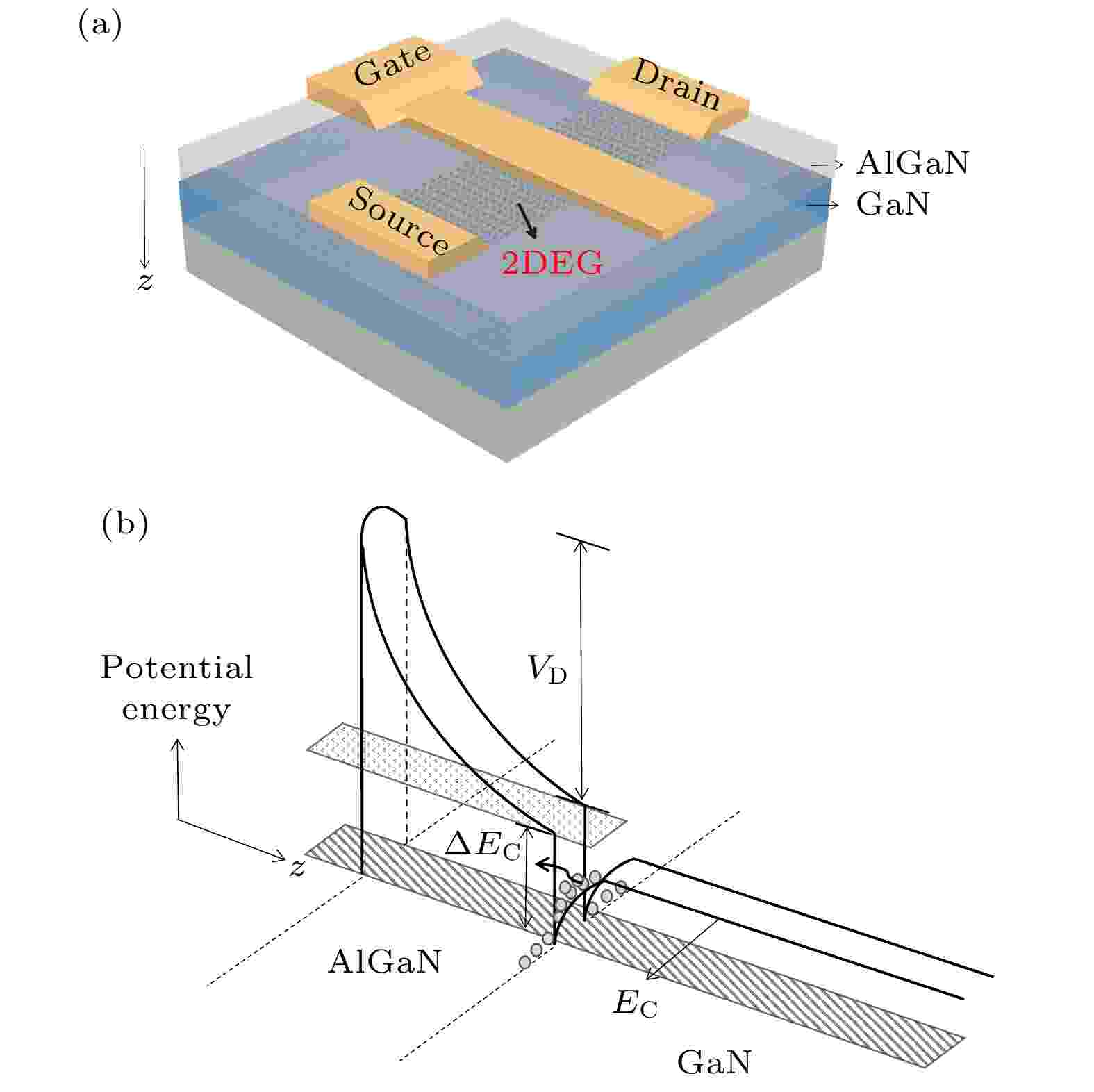
2022, 71 (16): 167301.
doi: 10.7498/aps.71.20220403
Abstract +
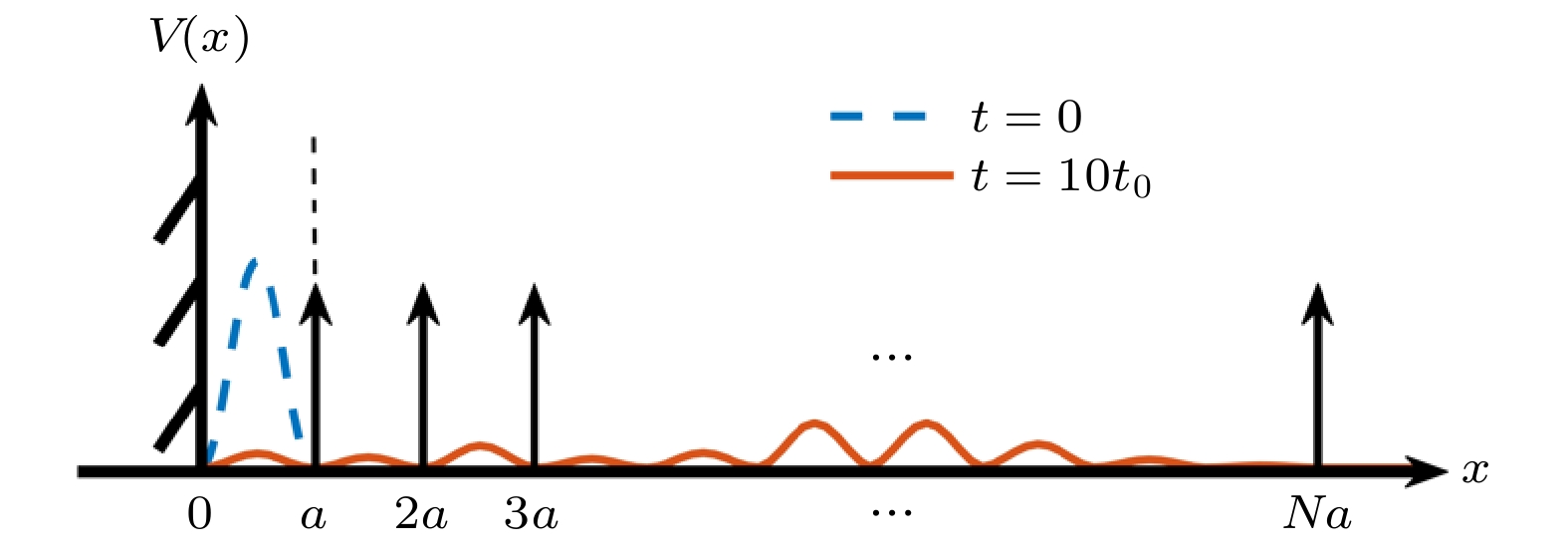
2022, 71 (16): 167302.
doi: 10.7498/aps.71.20220450
Abstract +
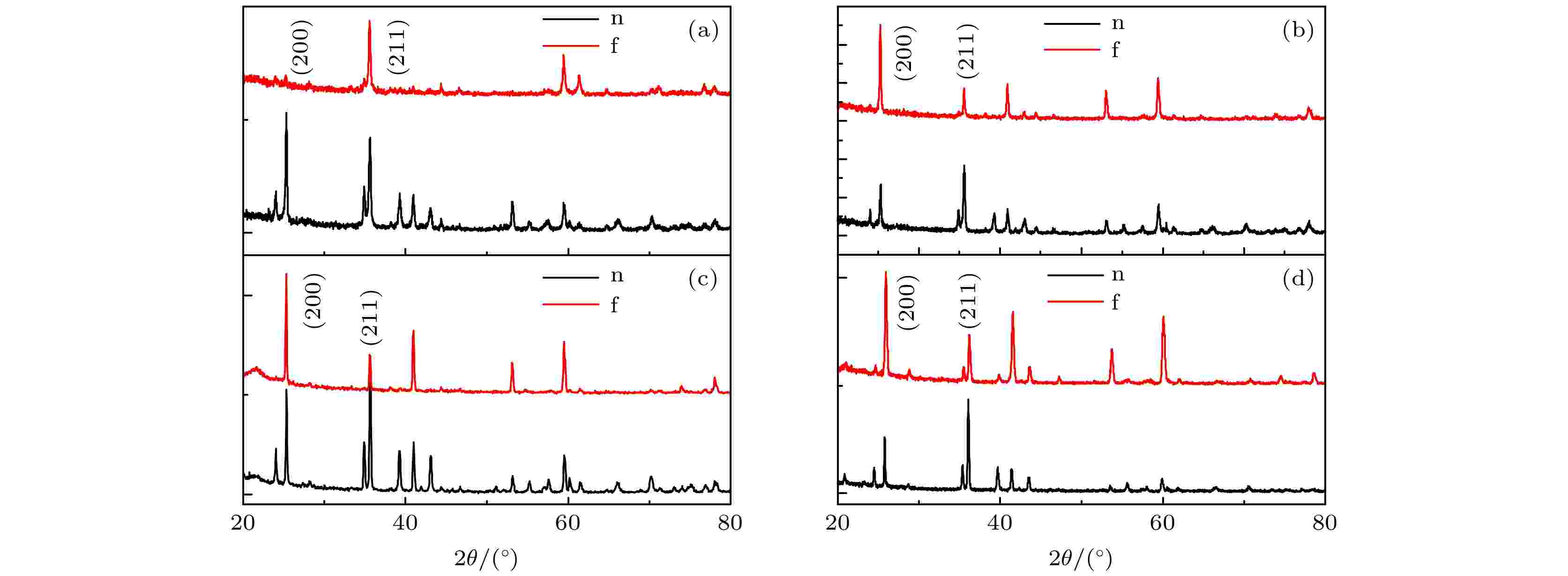
2022, 71 (16): 167501.
doi: 10.7498/aps.71.20220683
Abstract +
The performance of magnetocaloric effect materials is one of the key factors restricting the development of magnetic refrigeration technology. Materials with anisotropic magnetocaloric effect can be used in the rotary magnetic refrigeration technology, which is beneficial to the simplification of refrigeration devices. In this work, the magnetic properties, magnetocaloric effects, and magnetic anisotropies of rapidly quenched HoCoSi compounds are investigated. At low temperatures below Tt = 5.7 K, the HoCoSi ferromagnetism and helical magnetism coexist. With the increase of temperature, the HoCoSi undergoes a second-order phase transition from ferromagnetic (FM) to paramagnetic (PM) phase at TC = 13.7 K. Both XRD and SEM show that the HoCoSi has a preferred orientation. In order to obtain a large magnetocaloric effect and to determine the effect of preferred orientation on magnetism and magnetocaloric effect, the isothermal magnetization curves of the 10 m/s–HoCoSi fast quenched belt in the directions of H parallel and perpendicular to texture around the Curie temperature are analyzed. The corresponding magnetic entropy change (–ΔSM) and magnetic refrigeration capacity (RC) are calculated. Under the magnetic field changing from 0 to 5 T, the value of –ΔSM is 22 J/(kg·K) in the direction of H parallel to the texture and 12 J/(kg·K) in the direction of H perpendicular to texture , and their corresponding values of RC(RCP)are 360 (393.8) J·kg–1 and 160 (254.4) J/kg. The value of –ΔSM reaches 12.5 J/(kg·K)even at μ0H = 0–2 T in the direction of H parallel to the texture. It is obvious that the 10-m/s-HoCoSi fast quenching belt shows a large low-field magnetocaloric effect and obvious magnetic anisotropy, which is expected to be used to realize the magnetic refrigeration technology of rotating samples.
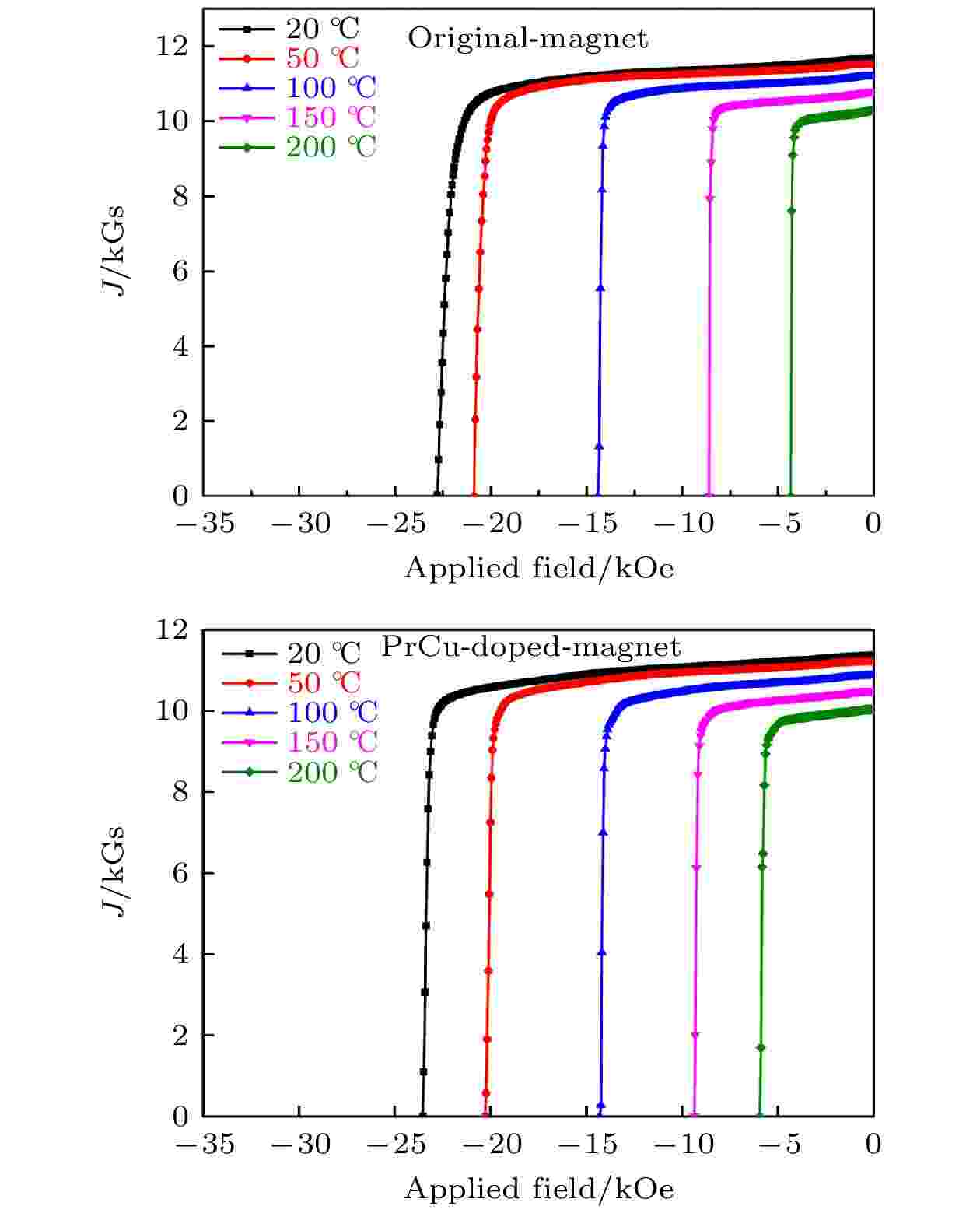
2022, 71 (16): 167502.
doi: 10.7498/aps.71.20220406
Abstract +
With the aim of increasing Cu concentration to regulate the distribution of Co elements in RE-rich phase, the low-melting-point Pr80Cu20 intergranular alloy is introduced into the (Pr, Nd, Dy)32.2Co13Cu0.4FebalB0.98M1.05 (M = Al, Ga, Zr) magnet. Comparing with the original magnet, the remanence of PrCu-doped magnet is basically unchanged, and the coercivity is increased by approximately 1.3 kOe. Simultaneously, the Curie temperature, remanence temperature coefficient and irreversible flux loss are slightly improved. Microstructural study reveals that the Co-lean phase and the Co-rich phase coexist in the grain boundary in the 2nd-annealed original magnet. However, for the PrCu-doped magnet, the uniform distribution of Cu and Co elements in the intergranular phase are evidently improved, resulting in the elimination of the Co-rich phase. Since the R2(Fe, Co)17 (R = Pr, Nd, Dy) soft magnetic phase easily coexist with the Co-rich phase and are detrimental to the coercivity, the elimination of Co-rich intergranular phase may be an important reason for the higher coercivity of the 2nd-annealed PrCu-doped magnet than that of the original magnet.
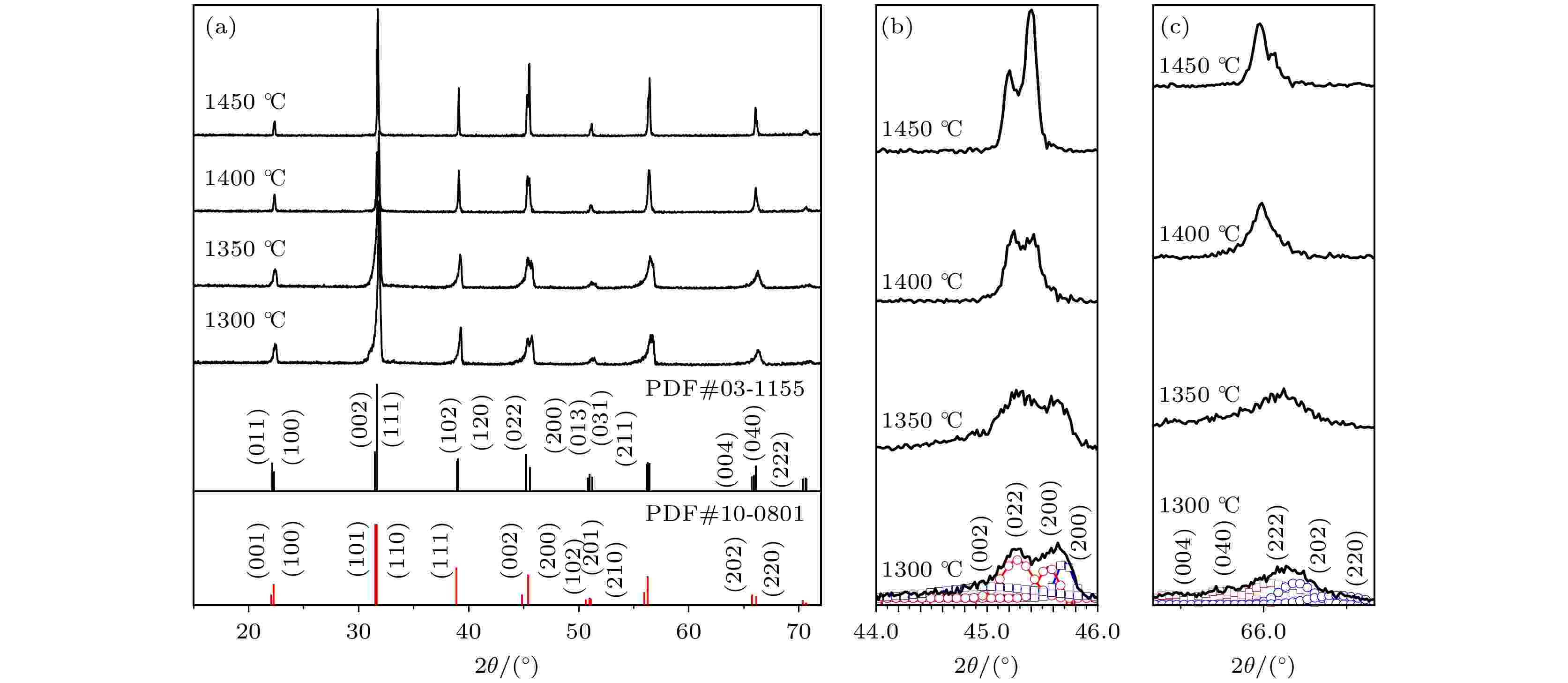
2022, 71 (16): 167701.
doi: 10.7498/aps.71.20220451
Abstract +
AbstractMicro-displacement actuators have important applications in aerospace, semiconductor, industry and other fields. Now most of the lead-based piezoelectric ceramics are used in the market. In consideration of environmental protection and legal restriction, it is urgent to develop lead-free ceramic materials with excellent electrostrictive properties. As a kind of ABO3-type ferroelectrics, (Ba,Ca)(Ti,Zr)O3 lead-free ceramics have attracted a lot of attention because of their high piezoelectricity. In this work, (Ba0.85Ca0.15)(Ti0.9Zr0.1)O3 (BCTZ) ceramics with high electrostrictive coefficient are prepared by the solid-state method. The effects of sintering temperature on the structures and electrical properties of BCTZ ceramics are studied. The results show that the sintering temperature can help to improve density and grain growth of BCTZ ceramic.There are no impurity phases in the BCTZ ceramic systems, and all samples show ABO3-type perovskite structures. At room temperature, the crystal structure of BCTZ ceramic forms coexistence of orthogonal (O)-tetragonal (T) phase. The dielectric peak of BCTZ ceramic is widened, and the Curie temperature reaches a maximum value of 110 ℃ when Ts = 1300 ℃. With the increase of sintering temperature, the dielectric peak of BCTZ ceramic gradually becomes narrowed, and the Curie temperature of ceramic moves toward low temperature.As the sintering temperature is 1300 ℃, the grain size of BCTZ ceramic is 1 μm, the large electrostrictive coefficient Q33 (5.84 × 10–2 m4/C2) can be obtained, which is about twice that of traditional PZT ceramic. This may be attributed to combination of the surface effect caused by grain size of BCTZ ceramic with the strong ionic nature of A-O chemical bond. In addition, although BCTZ ceramic has an O-T phase boundary near room temperature, the electrostrictive coefficient Q33 of ceramic has good temperature stability in a range of 25–100 ℃. It shows that the crystal phase and temperature have no effect on the electrostrictive coefficient of BCTZ lead-free ceramic. It provides a new idea for designing the high electrostrictive properties of lead-free piezoelectric ceramics with potential applications.
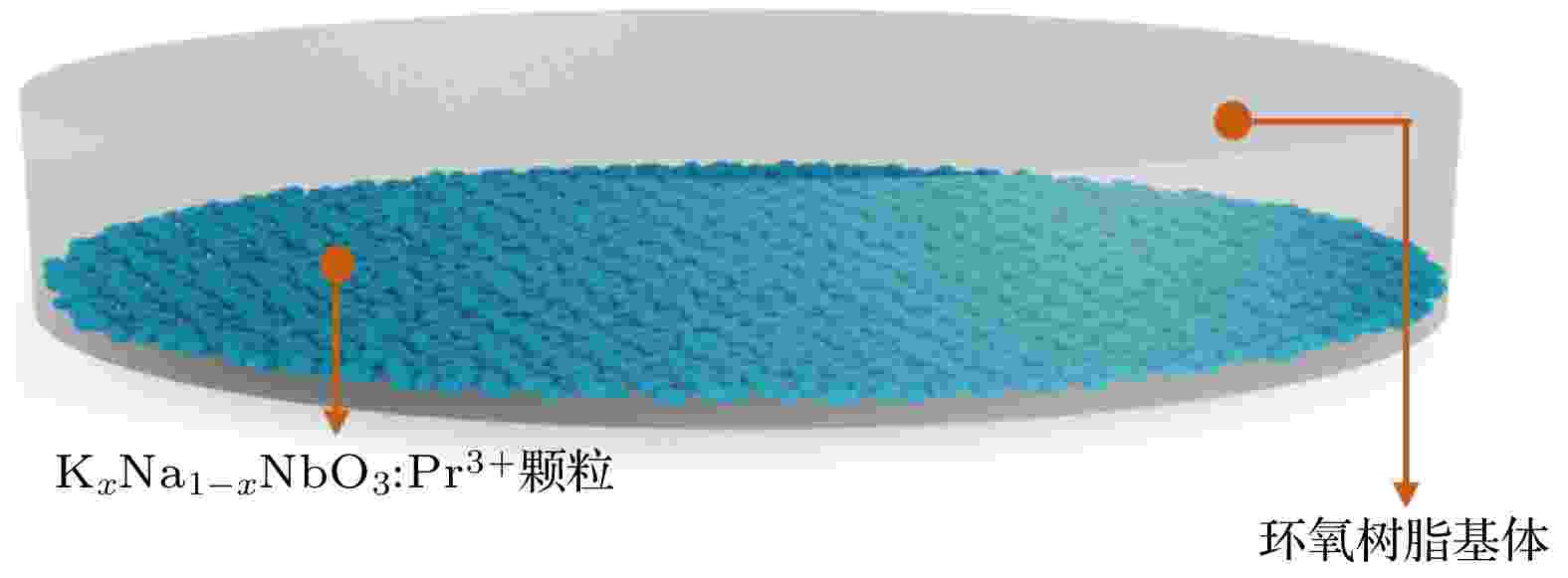
2022, 71 (16): 167801.
doi: 10.7498/aps.71.20220501
Abstract +
Mechanoluminescent (ML) materials have mechanical-light conversion properties and can generate luminescence under mechanical stress, which makes the ML materials have high application value in optical information display. In this work, the crystal structure and defect distribution are adjusted by changing the K+/Na+ ratio of the ferroelectric matrix KxNa1–xNbO3∶0.5%Pr3+ (KxNNOP), and the effects of K+ content on the photoluminescence (PL) and ML properties are systematically investigated. The research results indicate that as the K+ content increases, the symmetry of the crystal is enhanced, leading the PL intensity of the KxNNOP samples to decrease. It is worth noting that the emission peaks caused by the 3P1→3H5 and 3P0→3H5 transition at the Pr3+ electron level appear in the PL spectra of the components with higher K+ content under the light excitation of 450 nm, which is attributed to the different energy level positions of the internal valence electron charge transfer states within Pr-O-Nb, caused by the change in the distance between Pr3+ and Nb5+. Under the compressive stress, the KxNNOP (x = 0, 0.01, 0.02, 0.1) components exhibit the bright red ML, and the ML intensity increases with the K+ content increasing. The K0.1NNOP component exhibits the highest ML intensity emission. In particular, the ML behavior has the characteristics of repeatability and recoverability. The trap energy levels in the KxNNOP samples are investigated by thermoluminescence curves, revealing that the enhancement of ML in K0.1NNOP may be related to the differences in trap density and trap depth, caused by changes in K+ content. Based on these results, a model is established to elucidate the possible ML mechanism in KxNNOP.
INTERDISCIPLINARY PHYSICS AND RELATED AREAS OF SCIENCE AND TECHNOLOGY

2022, 71 (16): 168101.
doi: 10.7498/aps.71.20220322
Abstract +
The effect of interface kinetics on the stability of deep cell morphology in directional solidification is studied. By using the multiple variable method and the matching asymptotic methodandby finding the mode solution of the system,the dispersion relation satisfied by the change rate of the disturbance amplitude of the cell-crystal interface is derived , and the quantization condition of the interface morphology is obtained. The results show that there are two global instability mechanisms in the directional solidification system with considering the growth of deep cell crystal with interfacial dynamic parameters : global oscillation instability mechanism and low-frequency instability. The stability analysis shows that the interface stability parameter $\mathrm{\varepsilon }$ is related to the cell relative parameter $ {\mathrm{\lambda }}_{0} $ , and thatthe larger the interface dynamic parameter $ {M}_{\text{*}} $ , the larger the stable region of the overall fluctuation instability of the dendrite structure in the overall oscillation modeis.

2022, 71 (16): 168701.
doi: 10.7498/aps.71.20220309
Abstract +
Supported lipid bilayer (SLB) based biosensors possess biomedical applications such as in rapid detection of antigens and cytochromes. It is generally believed that the SLB can be formed by adsorbing and spontaneously rupturing vesicles on substrate. Recent findings highlight the importance of investigating the adsorption and rupture of individual vesicles during the SLB formation. Here, we use total internal reflection fluorescence microscopy (TIRFM) to characterize the spatiotemporal kinetics of the front spreading at patch boundary. Owing to the mixture of labeled and unlabeled vesicles individual vesicle or patch on the surface can be identified. The TIRFM is employed to investigate the adsorption, rupture of vesicles, and spreading of the patch front. Combining quartz crystal microbalance with dissipation monitoring (QCM-D) and TIRFM characterizations, we find that the size of vesicle has a significant effect on the front spreading at the patch boundary. Quantification of the number of patches and patches area displays that smaller vesicles are more prone to the formation of patches. The front spreading at the patch boundary is analyzed quantitatively using the average front growth velocity ($ {v}_{\rm afv} $ ), which indicates that the $ {v}_{\rm afv} $ of 40-nm vesicles is one order of magnitude larger than that of the 112 nm vesicles. Both theoretical analysis and experimental observation show that the smaller vesicles can attain the higher concentration on the surface (C) and high diffusivity in the medium. The global growth theoretical model (GGM) presents that for the patches with the same surface area and vesicle exposure time, the growth of the patch depends on C and lipid loss percentage during the vesicle rupture. The calculated lipid loss of the smaller vesicles is slightly higher than that of the larger vesicles, while C plays a dominating role in determining the disparity of the patch growth between the different vesicles. This study promotes the understanding of the growth mechanism of patches on the surface. It demonstates the critcial role of the supply of vesicles in this process and provides an enlightenment for investigating the reassembly of lipids on a nanoscale.

EDITOR'S SUGGESTION
2022, 71 (16): 168702.
doi: 10.7498/aps.71.20220103
Abstract +
Blackbody radiation source has been widely used as a calibration source for terahertz (THz) radiometers in recent decades with the applications of THz detection technology in the fields of aerospace, astronomy and remote sensing. We develop a THz blackbody calibration source capable of working in the cryogenic environment and having adjustable radiation power for the calibration of THz superconducting detectors. The ideal blackbody source has an emissivity and absorptivity of 1 and the reflectance coefficient is used to indirectly characterise the performance of the developed blackbody source. In this work, we use a mixture of epoxy, catalyst, carbon black and glass beads as blackbody absorbing material. The real part and imaginary part of the complex dielectric constant of Berkeley blackbody material are extracted from the THz time-domain spectra, and its reflection coefficient is measured. We use this material to design a conical blackbody radiation source , and simulate it as well. The simulation result show that it has low reflectivity below –35 dB in a frequency range of 0.2–0.5 THz. We fabricate a conical blackbody radiation source that is mounted in a dilution refrigerator, and use filters and light-guiding systems to make the detector for measuring the radiation by the THz light of a specific wavelength. The radiation power can be tuned by changing its temperature. The relationship between radiation power and temperature shows a power tuning range of 10–12–10–9 W in the frequency range of 0.2–0.5 THz with a minimum power value of 2.13 × 10–12 W. The designed blackbody radiation source can meet the calibration requirements of THz superconducting detectors, and will contribute to the development and application of highly sensitive THz radiometers.

2022, 71 (16): 168703.
doi: 10.7498/aps.71.20220090
Abstract +
The effects of carbon traps in Fe-C alloys on matrix defects and the evolutions of matrix defects in Fe-C alloys under irradiation are investigated in this paper. The object kinetic Monte Carlo (OKMC) modeling is used to establish a bridge between the micro-computational simulation data and the macro-experimental data. The simulation results verify the evolution of the carbon (C)-vacancy (Vac) complex under ideal conditions, and at relatively low temperatures, the complex is mainly C-Vac2. Under the assumption of complex traps, the evolution of matrix defects in Fe-C systems under irradiation is simulated in this work. It is verified that the carbon vacancy complex has an obvious trapping effect on matrix defects, and the simulation results of evolution simulation of matrix defects in the Fe-C system under irradiation are consistent with the experimental results. Furthermore, the effective approximate parameters used in the simulation are compared and discussed. The present research can provide a basic support for the research on the evolution of iron-based alloy irradiation defects.
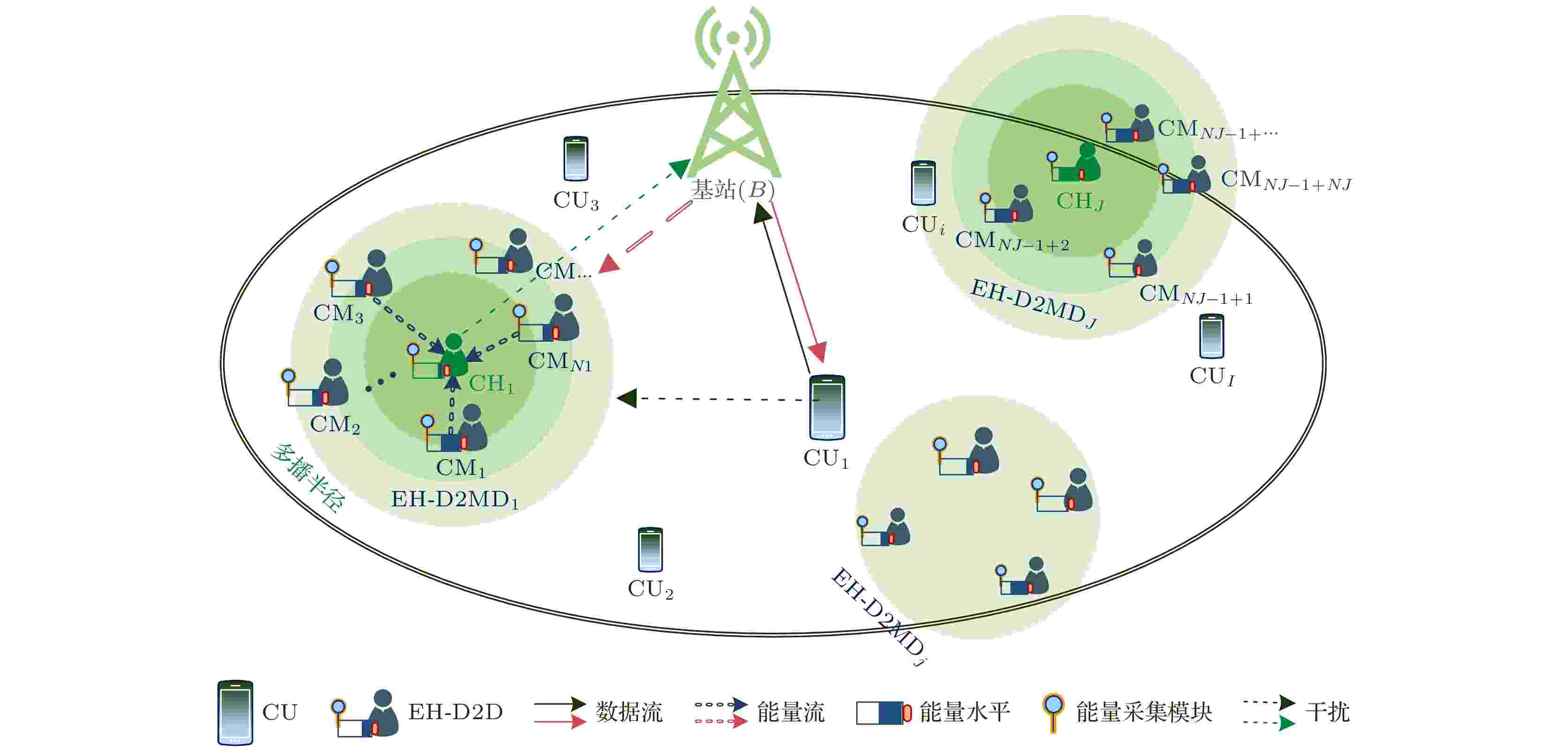
2022, 71 (16): 168801.
doi: 10.7498/aps.71.20220345
Abstract +
The cluster heads (CHs) will face the contradiction between the lack of available energy and the demand of high energy consumption in energy harvesting-supported device-to-device multicast communications (EH-D2MD). Wireless power transfer (WPT) technology is a possible way to address the above contradiction. The members of a device-to-device (D2D) multicast cluster can transfer part of their available energy to the CH by WPT and jointly undertake contents unloading. As a result, the transmission robustness of the multicast cluster can be improved. Therefore, a transmission scheme with energy cooperation (EC) is designed on the premise of cellular spectrum reusing. The EC scheme designs elaborately the energy harvesting, energy cooperation and data transmission of the spectrum reusing process. To realize the EC scheme, this work is to maximize the transmission rate of a multicast cluster and give the joint optimal solution of multi-domain resources including spectrum resource allocation, cooperative time factor planning, and power control. The rate maximization problem is a typical non-convex mixed integer non-linear programming (non-convex MINLP) problem. To investigate the performance of EH-D2MD communication scenario, a convex approximate lower-bound algorithm is proposed, which can transfer the non-convex problem into convex MINLP and can give a joint solution. Simulation results show that the proposed algorithm obtains a lower-bound solution of the rate maximization problem in comparison with the exhausted searching method. Furthermore, compared with the scheme without energy cooperation, the established EC transmission scheme can increase the transmission rate of D2MD by more than 45% and enhance the robustness of EH-D2MD.




































